 By Pepper Parr By Pepper Parr
May 17th, 2020
BURLINGTON, ON
The Elgin Promenade, that pathway that serves as a pedestrian and cycling corridor will extend from Brant Street to Martha Street connecting the downtown core to the Centennial Multi-Use path is about to embark on the 4th phase.
The idea has been on the drawing boards for some time – when a funding opportunity came up in 2017, the city moved on it quickly.
It was a grad idea when it was first presented to the public in 2017, made possible by a federal gas tax rebate grant of $700,000.
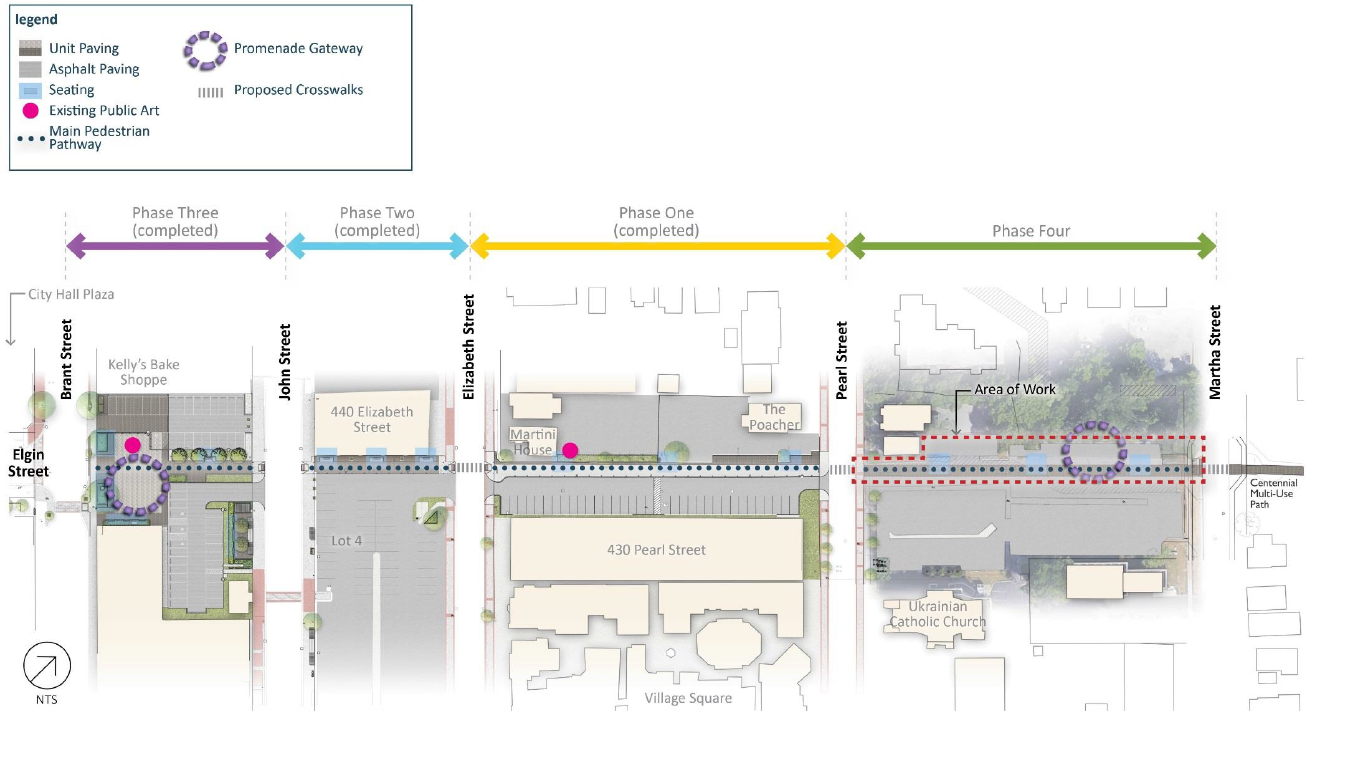 The Promenade will eventually allow people to cycle or walk across the width of the city from the BurlOak Park in the east end to the Canal that separates us from Hamilton on the west end. The Promenade will eventually allow people to cycle or walk across the width of the city from the BurlOak Park in the east end to the Canal that separates us from Hamilton on the west end.
The first thing it did was open up the space opposite city hall and a little to the south of city hall. Some parking spots were removed and the first of four phases between Brant and John Street was done.

Done in phases; the fourth one will begin in the Spring of 2021.
No one was really sure how many people would use the Promenade; when a pedestrian counter was installed on John Street from October 25th, 2019 to December 2, 2019 the counter showed approximately 346 people per day which is significant number of users, especially in the off-season.
A second pedestrian counter was also installed for all of 2019 at Martha Street and the Centennial Multi-Use Trail which is located beside the east end of the Elgin Promenade. The 2019 daily average count for 12 months at this location was 688.
Phase 4 connects Pearl Street to Martha Street – Site Constraints
The final phase that will connect Pearl Street to Martha Street, comes with a series of challenges and site constraints including land ownership, vehicular circulation of the adjacent parking lot and underground utilities.
The land for this proposed walkway is not owned the City however the City Realty Services department is in negotiation with the landowner of 425 Pearl Street to acquire the northern section of this parking lot in order to build the connecting link of the Elgin Promenade.
The proposed walkway is on top of two easements; Transnorthern (high-pressure gas pipeline) and Halton Region (sanitary and water). In advance of tendering this project, all those permits and approvals from various agencies have to be in place before a tender can be released.
The existing two-way driveway into the parking lot at 425 Pearl Street will be converted into a one-way in drive lane. A secondary driveway further south along Pearl Street will be built to accommodate egress from the existing parking lot.
 All of phase 4
 A tighter look at the west side of phase 4. 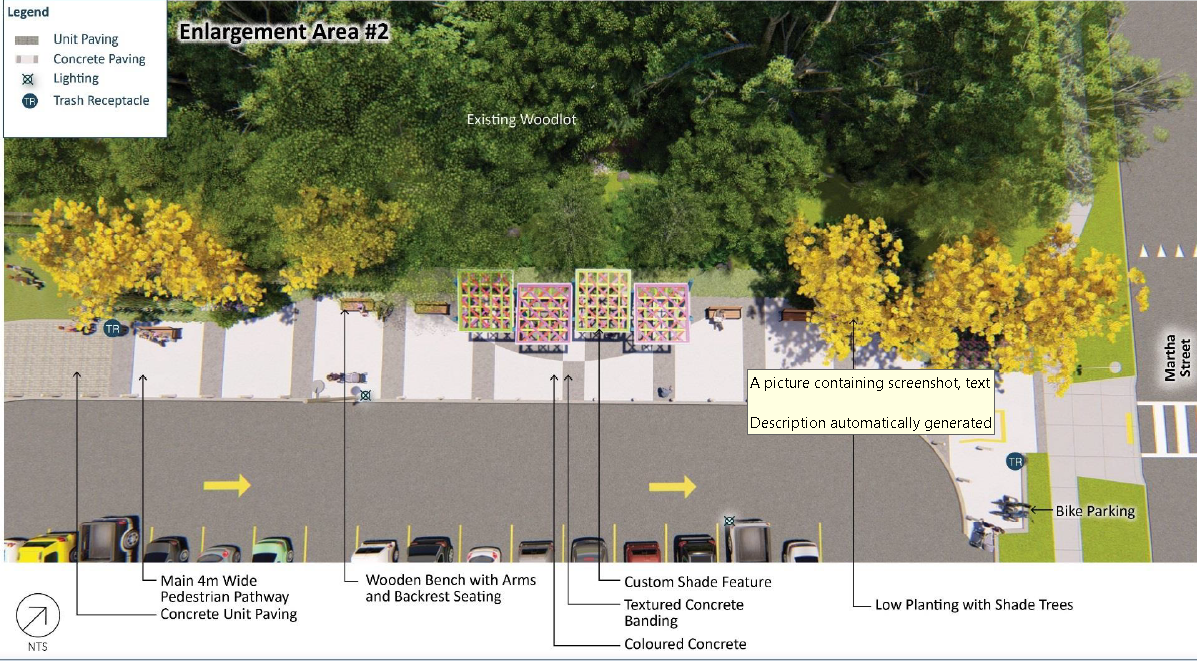 A closer look at the west side of phase 4 The Elgin Promenade Phase 4 – Design Program
The finished phase 4 will be a 4m wide pedestrian facility that is uninterrupted by cars (except at intersecting streets).
The illustrations for phase 4 represent approximately 60% design completion.
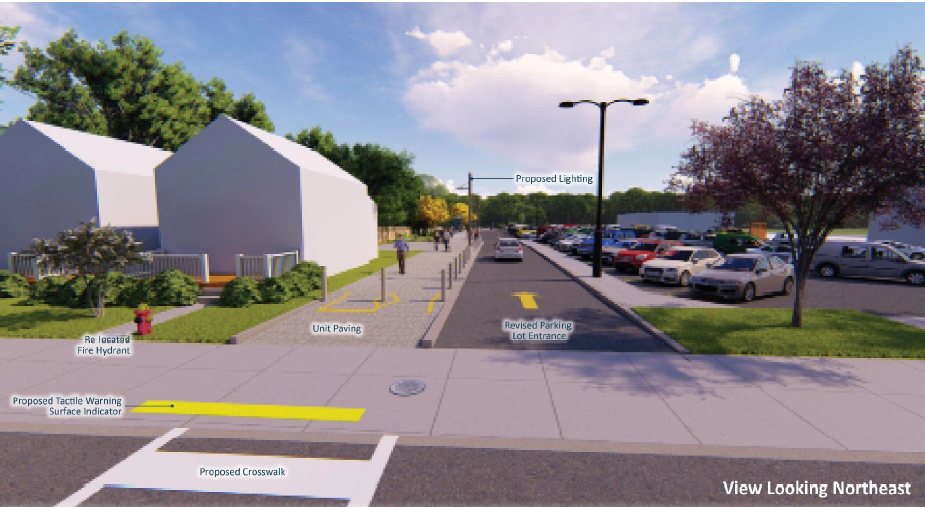 Looking east. The two white structures are properties that will have to be acquired. 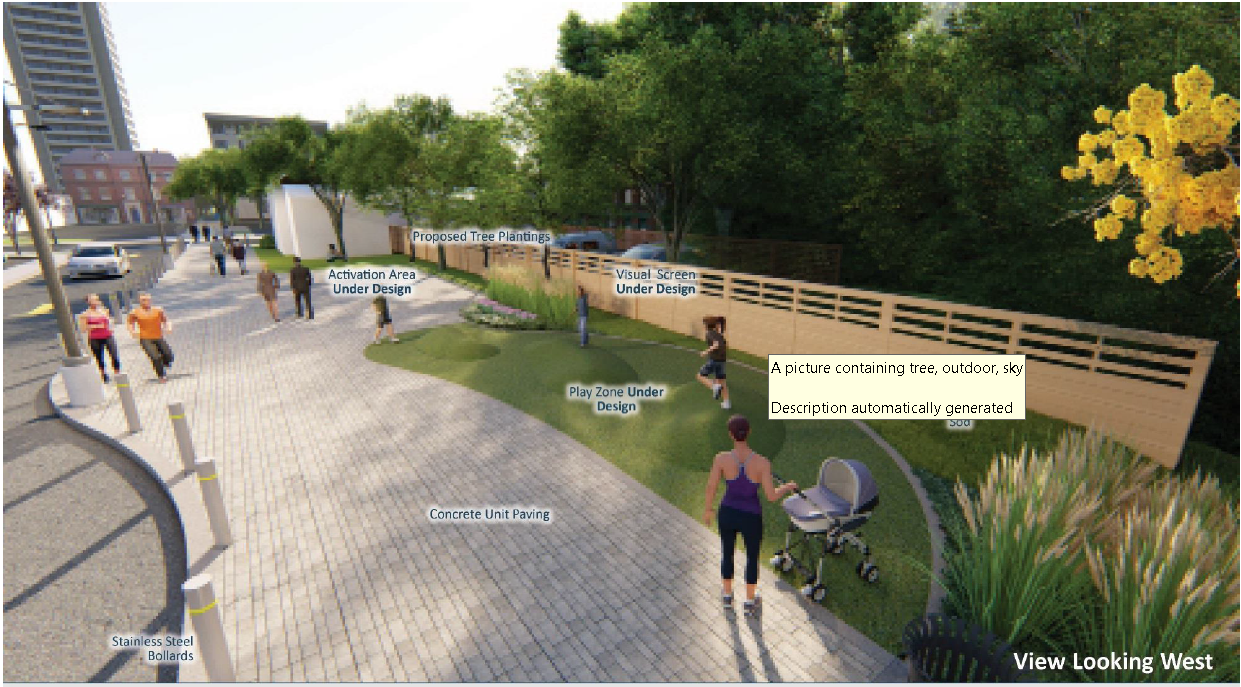 Looking west. Phase four has space for more than just a walk – there are small areas where people can congregate. Proposed Crossovers
There will be three pedestrian crossovers where the Promenade crosses Martha Street, Pearl Street and Elizabeth Street.
Martha Street and Pearl Street will be installed in conjunction with Phase 4 of the Promenade. Transportation Services staff are reviewing the Elizabeth Street pedestrian crossover to determine if it can be installed prior to completion of the Elgin Promenade.
In addition to the three pedestrian crossovers proposed, John Street is still under evaluation given the additional movements related to the Downtown
Parking Summary
The overall parking count from phases 1 to 3 resulted in a net zero loss of city parking stalls.
The project will result in 17 parking stalls being removed from a privately- owned parking lot at 425 Pearl Street. Currently, the owners of the lot do allow the public to use the space during evenings and weekends.
Capital funds have been committed in 2020 to complete a needs assessment with the goal of developing a plan to add parking supply to the downtown.
Project Schedule
The Elgin Promenade construction is anticipated to start in spring of 2021. Below is high-level schedule for the balance of this project.
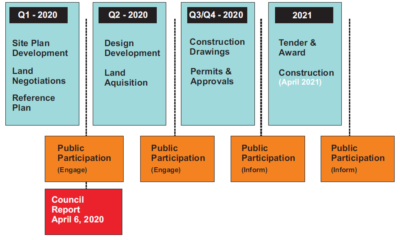 The addition of a handsome rather splendid path for pedestrians and cyclists does present a repetition of a problem at Spencer Smith Park where cyclists tend to forget to respect the rights of those walking to safe passage. The addition of a handsome rather splendid path for pedestrians and cyclists does present a repetition of a problem at Spencer Smith Park where cyclists tend to forget to respect the rights of those walking to safe passage.
This part of the city is rich in historically significant properties. The heritage value and appropriate protections (including possible Heritage Act designations) for the potential built heritage resources and potential cultural heritage landscapes will be addressed.
A report released last September, “Cultural Heritage Resource Assessment of the Downtown Mobility Hub”, will be reporting back to Council in 4Q; a funding source has yet to be determined.
One of the potential cultural heritage landscapes, the properties known as 431 and 435 Pearl Street, which are adjacent to the Elgin Promenade on the east side of Pearl Street.
Community Planning Department staff will report back to Council in spring 2020 concerning the scope and financial considerations for the heritage study.
Given the financial constraints brought about by the COVID crisis – could this part get put on hold ?
Part of Phase 4 includes new landscape construction on the rear portion of the city-owned property at 431 Pearl Street.
The project is going to significantly improve the way people use the downtown. It is going to require the purchase of a part of that parking lot, the purchase of the properties at 431 and 435 Pearl – all at a time when dollars are going to be in short supply.
The success of the Elgin Promenade to date is a direct result of the number of stakeholders that have participated in the development of this multi-use pathway facility. Formal engagement with the downtown business community, members of council, advisory committees and area residents started in 2017. Since the project start, there have been two formal PIC sessions as well other related initiatives such as the Urban Parks Strategy Workshop and Downtown Streetscape Guidelines public engagement process.
 Marianne Meed Ward as a citizen delegating to a council that she would lead in 2018 In Q2 of 2020 staff will host a design session, open to project stakeholders and members of Council, in order to complete the conceptual design for the area behind 431 Pearl Street.
 The view looking west There was a phrase that Marianne Meed Ward used frequently when she was the ward 2 Councillor – ‘these are nice to have projects that we can’t afford.’ Didn’t hear that phrase once during the discussion of what was a Receive and File report from the Planning department on this project.

 By Pepper Parr By Pepper Parr
May 13th, 2020
BURLINGTON, ON
Some background on the closing of Emma’s Back Porch.
 Emma’s at its best – it was the place to be. Craig Kowalchuk, the operator of Emma’s Back Porch didn’t own the property; he rented it from Mayrose Tyco.
That company has significant property interests in Burlington. They owned that land on which the Bridgewater development is taking place.
The property to the east of Emma’s is a vacant lot, also believed to be owned by Mayrose Tyco.
The property to the west, the motel is owned by Solid Gold people in Aldershot.
The Water Street Cooker is also owned by Mayrose.
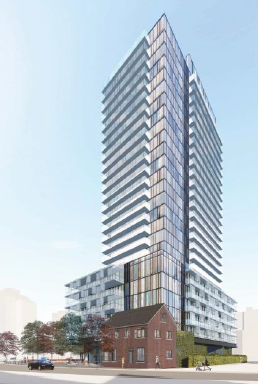 This is what the CORE development group is proposing; the heritage building will continue as a restaurant; traffic will flow on to Lakeshore Road the other side of this rendering. The proposal is for a 27 storey structure. 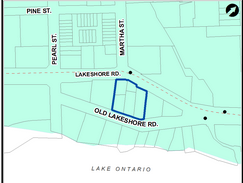 The outline represents the properties that were acquired and assembled by the CORE group Directly across the road from Emma’s is the location of a major development proposal; some xx storeys high.
That development had some problems – there was no space for much in the way of amenities.
My guess is that the CORE group bought the property and will make it part of the development.
Nothing is going to be built on the Emma’s site.
There is a planning term: “top of bank” that determines how far back a structure has to be set back from the top of the bank.
That top of bank limitation made the development of anything very high impossible.
That part of the city, known in planning circles as the “football”, which has Lakeshore Road on the north and Old Lakeshore road on the south is about to undergo huge changes.
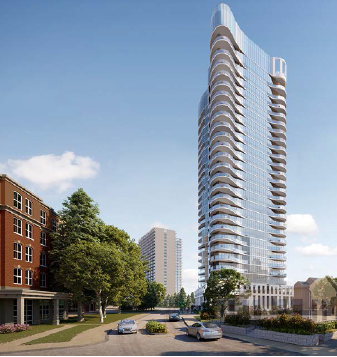 The Carnacelli development at the east end of the football will become the focus to the entry to the city. The Carnacelli development on the east end of the football is before LPAT; the CORE development is before LPAT.
The property at the west end of the football is owned by a trust, one of the leading real estate agents ii the city has his fingers in that pie.
Developers saw huge opportunities in Burlington. The city council at the time didn’t seem prepared to fight for its authenticity; of the seven just one Councillor was prepared to fight – she became Mayor in the 2018 election.
The new Offical Plan, adopted but not approved – it has to go to the Region first- has very clear guidelines – but most of these developments were filed before the Official Plan became real.
Can changes be made? Time will tell.
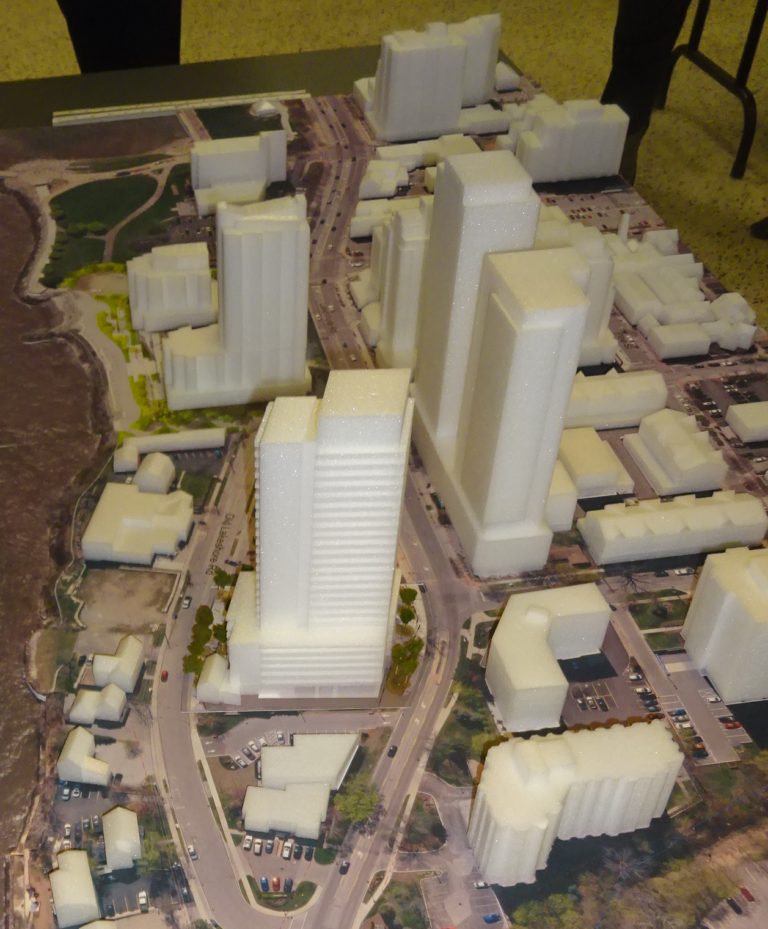 An architects model of what the east downtown core along Lakeshore Road could look like. 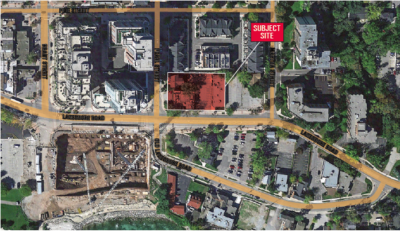 The football – where developers have some very big plans. While no one anticipated the closing of Emma’s – it might be the cost of the developments that a lot of people don’t want. However, people are going to buy the units. It will be interesting to see how this all rolls out.
Related news story links.
The development of the football
The background behind the CORE development.

 By Staff By Staff
May 12th, 2020
BURLINGTON, ON
 The Closer Look was that part of the Official Plan Review that focused on the downtown – what did we want and what was possible. Remember the Taking a Closer Look at the Downtown? The exercise that had people taking walking tours and talking one-on-one with the planners, sitting in on Standing Committee and Council meetings to hear what the consultants had to say about what could be done and what couldn’t be done in terms of setbacks and height, and shadows resulting from the different height options?
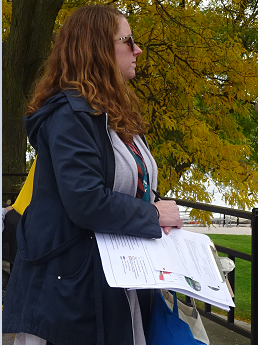 Alison Enns – she mothered that Closer Look from the very beginning. She introduced a number of innovative approaches to engaging the public; a public that wasn’t as engaged as it should have been. The group involved in working with the the public, Alison Enns and members of the team she was leading, churned out document after document. Two options were put forward, one of which didn’t seem to please anyone – the other began to look like the best of the lot but not all that good.
The problem wasn’t so much with the ideas but with the graphics and illustrations that were used to get the concept across to people – they just didn’t work all that well.
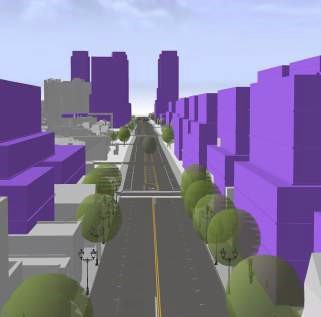 A graphic of one of the concepts for Brant Street looking south: it doesn’t convey all that much information. The announcement that we were now facing a pandemic changed everything. The province shut everything down; then the Mayor declared a State of Emergency and the city administration began running the city on a day to day basis – the crisis was something during which any immediate decisions that had to be made could be made without getting tied up in the procedural process that is required at council.
The COVID-19 infection was running rampant and it took some time for the health people to get a grip on the outbreaks that were taking place.
Most of them, it turned out, were cases where people working at several different nursing homes at the same time were spreading the disease.
Early in the game the disease was brought into the country from China, Italy, other parts of Europe and the United States.
Then the health people learned that the disease was being transmitted from one person to another in the community.
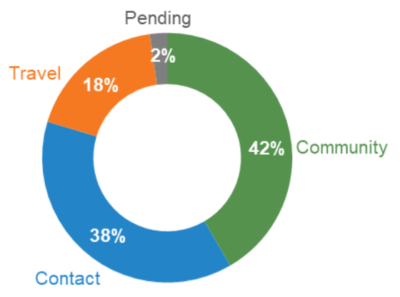 On May 3rd the Halton Region Public Health Unit said the infections came from the following sources. Travel was significantly reduced. We had to stay home and we had to be careful about the way we conducted ourselves around other people when we were outside.
City Hall staff didn’t go to city hall anymore. Some exceptions – several of the members of Council go to city hall because it is a quiet place where they can get some work done.
The “Taking a Closer Look at the Downtown” project was the name the planners gave to the Scoped Re-examination of the Adopted Official Plan: it has experienced delays due to COVID-19. There is now an updated project timeline.
It includes opportunities for public engagement.
End of May 2020: The City will release:
• the recommended policy changes for Downtown Burlington,
• the associated staff report,
• consultant report and
• technical studies.
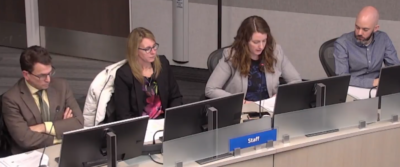 From the left: Paul Lowes with SGL Planning and Design, one of his staff, Alison Enns and one of her planning colleagues.
These documents will be posted for public review on both the Taking a Closer Look at the Downtown project webpage on Get Involved Burlington and the New Official Plan webpage.
July 2020: The City will share two more documents:
• Financial Impact Analysis concerning the recommended policy modifications, and
• Draft Downtown Burlington Placemaking and Design Guidelines for public review.
Aug. 28, 2020: Anyone with comments on these documents should submit their comments to the project team by Aug. 28 so the project team has time to consider the feedback in advance of the Sept. 30 Committee meeting.
Sept. 30, 2020: City Council will review all reports at a public meeting of the Community Planning, Regulation, and Mobility Committee on Sept. 30. This meeting will include a presentation from City staff and the project consultants, and opportunities for the public to delegate.
Oct. 7, 2020: Council will consider the Sept. 30 recommendations at a Special Council meeting on Oct. 7.

 By Pepper Parr By Pepper Parr
May 1st, 2020
BURLINGTON, ON
She isn’t ready for the big stage – not yet
And she needs to let the microphone slide into other hands.
 For her first Zoom solo – she did Ok. On the positive side – Lisa Kearns deserves credit for taking a shot at using Zoom to talk to her people,
She drew 35 people – nice to see Jackie Isada again. I think Paddy Torsney should have been less blatant with the wine glass.
Kearns chose to cover the complete waterfront – her audience was well plugged in – they didn’t need be told to wash their hands.
Kearns likes the new TelePlus program the city Parks and Recreation has rolled out. Few fully understand what the city has gotten itself into. Time will reveal where the problems are.
Two parts of the presentation were disturbing – before questions were permitted Jenn Morrison from CLV development that is going to put up seven structures that range from 29 – 37 floors, got to make comments. There was no opportunity to discuss that development in more detail.
The rules appear to be a bit different for this development.
We did learn that those sites that are permitted to continue construction can work from 6:00 am to 10:00 pm used to be 7 to 7.
If a development site has risen above grade it is deemed essential and can continue building.
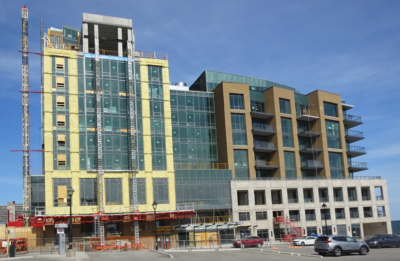 Section on the right is residential – construction can continue – section on the left is a hotel – not essential – continued construction not permitted. Bridgewater site that looks as if it is going to be under construction for some time. The residential parts can continue with construction – but the hotel which is on the west side cannot – hotels were not deemed essential.
Cyclists are causing a lot of people considerable grief. They are on pathways that were not meant for bikes and they “just fly by” as one commentator said.
There was a “hint” that a way might have to be found to limit the number of people who access the park – where you are expected to walk with no dilly dallying or sitting on a bench for a break.
It was a good effort – do it again – but listen more and talk less.

 By Staff By Staff
April 27th, 2020
BURLINGTON, ON
In her A Better Burlington newsletter, Mayor Marianne Meed Ward said:
Our community has received some great and long awaited news today from Steve Clark, Minister of Municipal Affairs and Housing, and Caroline Mulroney, Minister of Transportation: the city and Region can immediately work together to remove the Major Transit Station Area (MTSA) and Mobility Hub designations downtown.
These designations have been used to justify overdevelopment in downtown Burlington.
In a letter addressed to myself as head of Burlington City Council and Gary Carr, Chair of Halton Region Council, the Minister states:
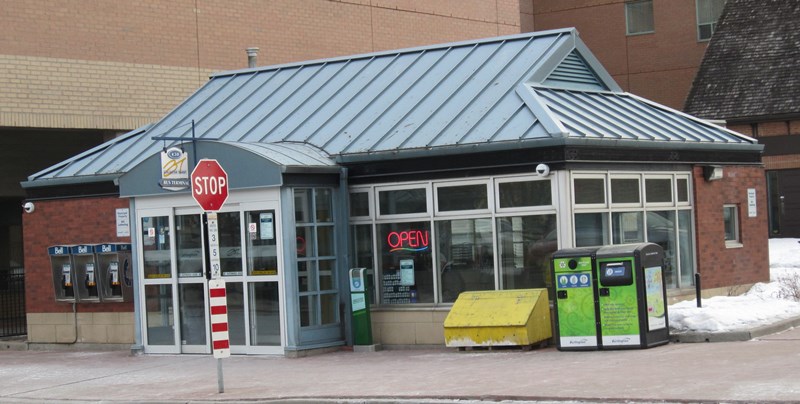 There was a point at which a former Director of Transit suggested tearing the building down. Then it became a technical point on which a developer won the right to put up a 24 story building. “There is no provincial requirement for mobility hubs to be identified in municipal official plans, including Downtown Burlington…. Therefore, the Region of Halton, working with the City of Burlington, has the ability to remove the identification of a mobility hub and an MTSA in Downtown Burlington, centred on the John Street bus terminal, from its Official Plan.”
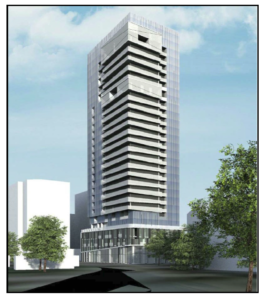 The developers of the Naurique will always have a soft spot for that little transit station. The letter further states that the change can be made through an Official Plan Amendment now, or during the next Municipal Comprehensive Review, scheduled at the Region for later this year.
“This means that the Region can submit an amendment to remove the Downtown Burlington mobility hub and MTSA designations in the Region of Halton’s Official Plan now.”
The mobility hub designation for downtown Burlington and the Burlington GO station first appeared in Metrolinx documents in 2008, and was later embedded into the Region of Halton Official Plan in 2011, based on the 2008 Regional Transportation Plan.
The 2041 Regional Transportation Plan, issued in 2018, refined the concept of mobility hubs to focus on MTSAs along subway lines and priority transit corridors.
As a result of changes to the policy framework for planning in the Greater Golden Horseshoe introduced by the current government “we do not require mobility hubs to be identified in municipal official plans.”
The ministers have also directed Metrolinx “to remove legacy documents that refer to the 2008 mobility hubs.”
Both ministers also specifically thanked our Burlington Member of Provincial Parliament Jane McKenna for her “tireless advocacy” on behalf of residents to remove the MTSA/Mobility Hub.
“As a result of extensive advocacy from MPP Jane McKenna since July 2018 we agree that the John Street bus terminal does not constitute a mobility hub given that it is not at the intersection of multiple Frequent Rapid Transit Network routes.”
City and Region planning staff are reviewing the letter and will have more information for the community on next steps and timing in coming days.
With news like that in the air it didn’t take MPP Jane McKenna long to get a place in that parade. In a media release from the Office of the MPP, the first the Gazette has received in over a year, McKenna said: ““I’m happy to report today that there is no longer a provincial requirement for the mobility hub or Major Transit Station Area designation in Downtown Burlington,” said MPP Jane McKenna.
 Jane McKenna the night she was elected the first time “This means that Halton Region, working with the City of Burlington, can submit an amendment to the province now to remove Burlington’s downtown mobility hub and MTSA designation from the Region’s Official Plan.”
“The Ford government has taken the position that municipalities may choose to take a phased approach to their municipal comprehensive review through multiple municipal official plan amendments under section 26,” said Minister Steve Clark. “As a result, removing the MTSA designation from Downtown Burlington could occur through a municipal official plan amendment under section 17 of the Planning Act.”

 By Pepper Parr By Pepper Parr
April 27th, 2020
BURLINGTON, ON
Ward 5 Councillor Paul Sharman weighs in on what happened to that development on Brant Street.
On August 31, 2017, the Planning and Building Department acknowledged that a complete application had been received for an Official Plan and Zoning By-law Amendment for 2100 Brant Street to facilitate the development of 233 townhouse units.
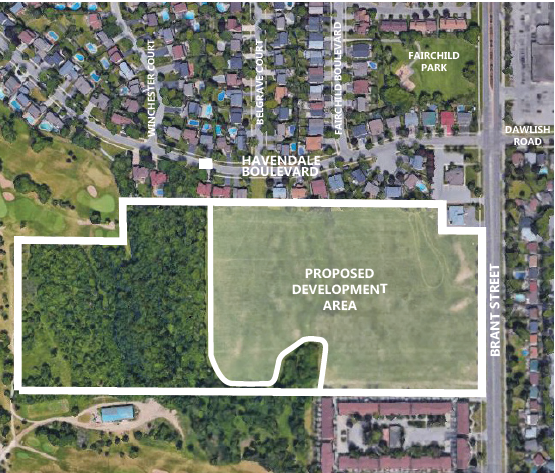 The ward Councillors; first Rick Craven and now Kelvin Galbraith were not opposed to the development. The original applications proposed the development of 233 townhouse dwelling units comprised of street townhouses located along Brant Street and a proposed public street and standard condominium townhouse units. The original net density of the development was 43.55 units per hectare and gross density was 21.07 units per hectare. The applications were requesting site specific exceptions to allow for the development.
Further to technical comments received from staff, other agencies and public feedback received through the processing of the applications, the applicant made changes to the proposed development and submitted revised studies, reports and a reconfigured draft plan of subdivision.
The applicants appealed the subject applications to the Local Planning Appeals Tribunal after the required time period established by the Planning Act expired. Notwithstanding the appeals, the City continued to work with the applicant in an effort to resolve what the City and its residents were concerned about. The result of these negotiations with the applicants, was Minutes of Settlement. This agreement was reached in November 2018 and supported a 212-unit townhouse development. This settlement agreement was based on the assessment from staff that the application satisfied all regulatory and planning requirements and was therefore defensible at LPAT.
 Paul Sharman listening to a delegation Despite the advice of staff, on December 17, 2018, the newly elected City Council, in a vote that was not unanimous, repudiated (i.e. cancelled) the settlement agreement. That decision not only pushed the City and the applicants towards an LPAT hearing but is also expected to lead to an awarding of costs to National Homes in an amount of approximately of $28,000 when the final settlements and awards are confirmed.
Notwithstanding the grim reality facing Council, City staff continued to work with the applicant in an effort to further refine the proposal to address concerns raised by members of Council and the neighbourhood surrounding the property.
At its meeting of April, 20, 2020 Burlington City Council approved the planning staff recommendation of Confidential Legal Report L-10-20 to accept a new offer of settlement between National Homes (Brant) Inc. (“National Homes”) and the City.
This settlement agreement presented to us was essentially based on the assessment from staff indicating that proposed amendments to the development proposal satisfied all regulatory and planning requirements and was therefore defensible at LPAT. The settlement proposed is almost identical to the rationale provided to the previous Council.
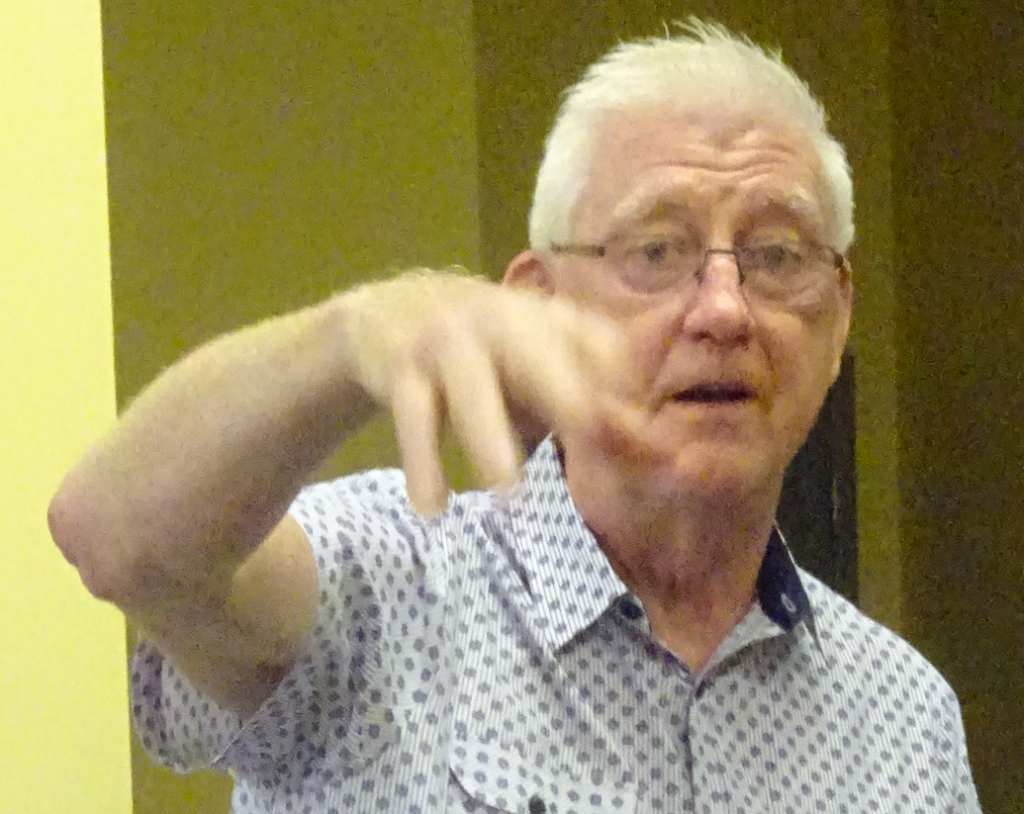 Paul Sharman fighting for his political life in the fall of 2018 Sharman says he is “the only returning member of Council in 2018 who voted to support of the original settlement agreement with National Homes. That decision was based on two considerations.
The first being that the applicant had worked with community members and staff to achieve several modifications. Original 2018 approved settlement included:
• reduction of 21 units
• addition of 0.76 parkland
• addition of 7 townhomes suitable for families and seniors
The second consideration being the assessment of staff that the application satisfied all regulatory and planning requirements and was therefore defensible at LPAT.
“On April 20th, 2020, I again voted in support of what was essentially the same application that I supported in 2018, for the same reasons although, as I have noted, there were some further, minor, modifications.
“Ironically, it is possible that increased setbacks included in the 2020 settlement will actually increase the net density of the development. In other words, the development will be more compact.
“It is unfortunate that taxpayers will likely foot a $28,000 legal fee that will be awarded against the City resulting from the new 2018 Council decision to scrap the first settlement agreement.”
Is that a shot over somebody’s bow?
Related articles:
John Calvert’s J’Accuse
The Mayor’s rationale

 By Pepper Parr By Pepper Parr
April 22nd, 2020
BURLINGTON, ON
In a Statement published in the Mayor’s Newsletter – A Better Burlington – Mayor Meed Ward wrote:
City Council, at a Closed session accepted a proposed revised plan for a townhouse and semi-detached development at 2100 Brant Street. The proposal will be decided by the Local Planning Appeal Tribunal (LPAT) at a hearing scheduled in July.
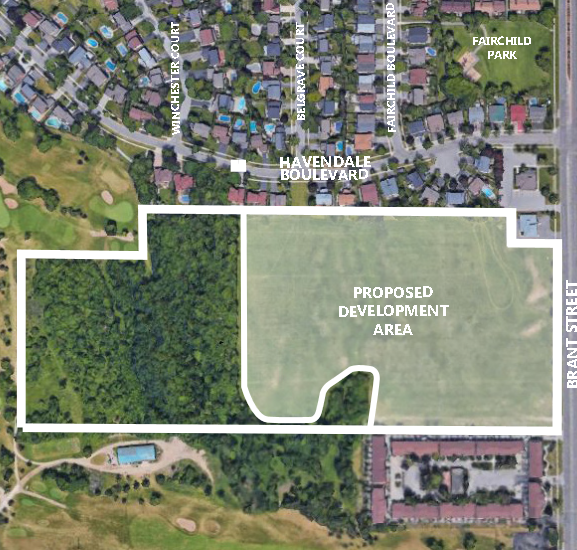 It is a piece of land that was farmed for centuries. It was pristine – and good have been a model community. The plans do not include anything near the traditional back yard. The original proposal was for 12 townhouse blocks with a total of 83 units and three condominium townhouse blocks with 150 units, for a total development of 233 units. There was no parkland. Also included in the applications are a woodlot block as well as a natural heritage system block. The proposed development site has a total area of 11.1 hectares (27.2 acres). The developable area is 5.04 hectares.
The land is currently vacant and has been historically used for agricultural purposes.
The former City Council had approved a revised proposal in November 2018, before the new council was sworn in but after the election when 5 of 7 members of the previous council were not returning due to defeat or retirement.
Current City Council rescinded that plan in December 2018 in an effort to give residents, staff and the applicant additional time to improve the plan and come to a consensus on a revised development.
A group of citizens, primarily representing residents in the neighbourhood north of the development, formed Vision 2100 Brant Neighbours Association, an incorporated group that received Party status at the LPAT hearing to present evidence on behalf of residents.
Representatives of the townhouse condominium board immediately to the south of the project had earlier issued a letter of support for the November revised proposal, considering their issues (primarily around setbacks and drainage) to be settled.
City Council and Vision 2100 received a revised proposal in March 2020. This proposal was provided directly to the Vision 2100 citizen’s group at a meeting March 10 with the applicant and Ward Councillor. The proposal was further discussed April 2 via teleconference with Vision 2100 representatives and the Ward Councillor and Mayor, to seek citizen input on the proposal.
To date, Vision 2100 has not provided any suggested changes or feedback on the proposal, but did raise additional questions around parking, snow storage, traffic, and storm water management. These were answered by the applicant by email to the residents (see background below), and addressed in the revised proposal to the city’s satisfaction.
The new proposal improves on the original application as well as the November 2018 proposal with the following changes:
Reducing the unit count from 212 to 210 (down from 233 in the original proposal)
In the Northwest area of the development on both sides of the Almonte Drive extension, replacing six 2-storey townhouse units with 4 semi-detached 1.5 storey bungalofts
Increasing setbacks from the homes to the north, from 9 metres to 10 metres; in some areas the setback is 11 metres
Increasing the senior-friendly units with ground floor bedrooms to aid accessibility, from 7 to 16 units
Provision of a 0.3 hectare (0.76 acre) centrally located Public Park.
City council voted to accept the revised proposal at the council meeting of April 20, 2020.
The details of that March plan, and the planning justification for supporting it provided by city staff, are included in the planning staff analysis here: 2100 Brant Planning Analysis
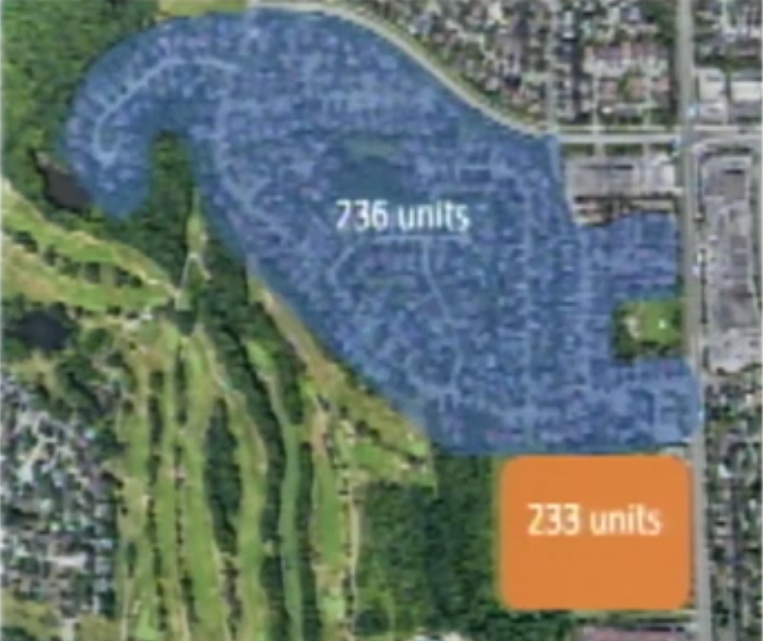 The orange is where the proposed 233 units were to go – that has been reduced to 210 Unlike the vast majority of municipalities, Burlington releases the planning analysis for matters which the municipality is supporting approval of by the LPAT, in advance of the hearing. This policy change was implemented by the new City Council to ensure maximum transparency with residents about the basis of our decision-making.
The final decision on the revised proposal will be made by the LPAT. The city and applicant will appear in support of the proposal.
Vision 2100 is a registered Party to the hearing which gives them the right at the hearing to call evidence (witnesses, studies or both) to refute or support the proposal, cross examine city or applicant witnesses, or suggest further modifications to the proposal. The City of Burlington, the applicant (National Homes) and the Region of Halton are the other registered Parties to the hearing. There are two registered Participants to the hearing who can provide feedback at the hearing as well.
Details on the original application submitted in 2017, revisions to the proposal, and details of the LPAT hearing are available on the project page for the development here created when the application was received: Current Development Applications, Ward 1, 2100 Brant St
Below is additional background, answers to some questions and a statement from the Mayor and Ward councillor.
Statement from Mayor Marianne Meed Ward and Ward 1 Councillor Kelvin Galbraith on 2100 Brant:
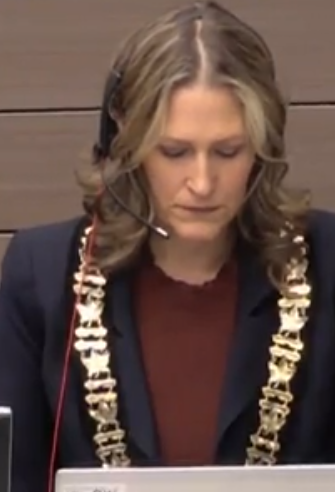 Mayor Marianne Meed Ward Resident input over several years, including the work of Vision 2100, has improved this application for the better, and we thank them for that.
Though the most recent proposal may not be exactly what residents or Councillors were hoping for, it does include more green space than the original proposal, including a new park, fewer units, less height and density, more variety and senior-friendly options, increased setbacks and better transition to the neighbourhoods to the north and south. The recent questions raised by residents around parking, traffic, snow storage and storm water management have been addressed.
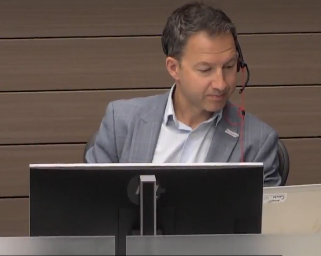 Ward 1 Councillor Kelvin Galbraith – working part time as a DJ? In accepting the revised proposal, council considered a number of factors, including public input, the improvements made that addressed some of the concerns raised, the planning justification provided by staff, and advice from legal counsel.
Our decision also factored in some practical realities, including the inability to secure a planning witness that was of the opinion that the November 2018 proposal did not overall represent good planning, the likelihood that a hearing would not produce a different result, and the possibility that city taxpayers could be required to pay the entire costs of the applicant at a lengthy hearing. In addition, city staff who supported the November proposal would likely have been required to testify on behalf of the applicant, at city taxpayers expense.
We also considered that notwithstanding council accepting a revised proposal, there remain options for continued public input, especially for Vision 2100, which can provide feedback or modifications on the revised proposal, and/or proceed as a party to the hearing and call evidence and witnesses.
We believe we achieved the best outcome possible for residents in this case, and your input directly made that happen.
Background and Answers to Questions:
How has public input been gathered on this application?
This application has been under review since 2017, with multiple points of public input along the way. A citizen’s group, Vision 2100, was formed to represent the concerns of residents primarily north of the development site. A citizen’s group was formed to the south to represent the interests of the townhouse development to the south. They submitted a letter of support for the November 2018 revised proposal.
The applicant met with the public over 12 times in that period, in either organized public meetings or smaller resident meetings.
There was a neighbourhood meeting Oct. 12, 2017, a statutory public meeting April 3, 2018 where residents presented detailed feedback and suggested modifications to council. Some council members at the time remarked that they were the best and most comprehensive presentations they had heard. There was a further open house to discuss revised plans July 17, 2018.
Throughout 2019 there have been numerous additional consultations with the applicant, city staff and Vision 2100, individually or as a group, to address the remaining concerns of the community. They included general over development of the site with related issues, and the interface of the development to the single family neighbourhood to the north, at Almonte Drive/Belgrave Court/Havendale Blvd.
In February 2020 the applicant advised it was prepared to make changes to the plan to address the resident concerns. In March they submitted a revised proposal to Vision 2100, and city staff. City Council received the proposal in early April.
How is public input reflected in the final proposal?
Since the original application, there have been at least 11 major revisions as a result of public, staff and council input, including a reduction in units, increased parkland, increased setbacks from the neighbourhoods to the north and south, reduced height of some units and conversion from townhouses to semi-detached, and provision of accessible, senior friendly semi-detached bungalofts. There have been three different proposals including the most recent one.
The proposal was provided directly to the Vision 2100 citizen’s group at a meeting March 10 with the applicant and Ward Councillor. The proposal was further discussed April 2 via teleconference with Vision 2100 representatives and the Ward Councillor and Mayor, to seek citizen input on the proposal.
To date, they have not provided feedback on the most recent proposal, but they did raise several outstanding questions via email related to traffic, parking, snow storage and storm water management. These questions were raised with the applicant by the Mayor and Ward Councillor on residents behalf, with the response as follows:
Traffic on Havendale, Fairchild and Brant St. Was a traffic study produced and taken into account? ANSWER: A traffic study was provided to Vision 2100 previously with the analysis describing the difference of a single family development and a townhouse development completed by a professional traffic engineer, outlining that a single family home development would generate more traffic. City staff reviewed and supported the findings of the study.
Parking, no street parking on private roads and limited visitors parking. Where do visitors park? ANSWER: Visitor parking is provided in the development on both public roads interior to the site and private roads as detailed in the attached site plan (also provided to Vision 2100).
The Zoning By-law requires 54 visitor parking spaces, whereas 59 are proposed. In addition 25 on-street parking spaces could be accommodated along the Almonte Drive extension.
Snow removal. There is no room to pile snow. Does the City have a plan to resolve that problem? ANSWER: The site plan attached to the revised proposal identifies areas where snow storage will be designated, in the bottom left and top right areas of the development.
Storm Water management. This has been a serious issue for the residents, based on actual flooding experiences where the empty lot at 2100 Brant served as a sink which helped to mitigate the flooding. Now there will be no sink because the area will be developed. The proposal is for an underground collection system with tanks which can be drained into the existing stormwater sewer at Brant Street. The question is, will there be enough capacity to accommodate two major rain storms in a row and will the system work properly? ANSWER: The design was prepared by a professional engineer based on their experience and history of developing many projects within the GTA with a similar design. Burlington City engineering staff had their professional engineers along with the Region of Halton’s professional engineers review the design of the system and both have been satisfied.
Why was this appealed to the Local Planning Appeal Tribunal?
Developers and residents have equal legal right in Ontario to appeal any decision of city council on a development matter to the LPAT, to seek a different decision.
Further, an applicant can appeal to the LPAT if the municipality exceeds the provincially mandated timelines to make a decision, which at the time of this application were 180 days.
The applicant, residents and staff agreed to continue to work together on the project beyond the 180 day time frame to try to come to a better outcome, thus setting aside the deadline. This application is now in its third year of review.
However, this changed when the previous provincial government announced it was making changes to the LPAT (then called the Ontario Municipal Board) to restrict what could be appealed and giving more priority to local council decisions. The current provincial government rolled back those changes so the LPAT functions essentially the same as the OMB did.
However in that transition period thousands of applications across the province, were preemptively made to preserve rights to a hearing under the old OMB rules, including this one which appealed using the tool of “non decision” within the deadline, because council had not made a decision within the 180 day time frame.
What happens now?
This application and the proposed revised plan will be heard by the Local Planning Appeal Tribunal (LPAT) at a 12-day hearing scheduled to begin July 27. At that hearing, the applicant and city staff, based on City Council’s instructions, will jointly be requesting that the LPAT approve the revised application.
Due to COVID19, the province has cancelled all hearings till the end of June, but that does not apply to 2100 Brant Street as it is beyond that window of time. As such, all parties to the hearing, including Vision 2100, are required to produce evidence and experts to refute the application and revised proposal if they wish to challenge it.
To date, neither the city, nor Vision 2100, were able to find a planner to refute the proposal. This would leave the city without a witness at the hearing, compromising any ability to reach a different outcome at a hearing than the proposed application. In addition, city staff would most likely be called by the applicant to support the proposal, as they initially recommended approval of the November 2018 proposal. This factored into council’s decision to accept the third revised proposal as the best outcome possible, and an improvement on both the original and November proposals.
Entering a hearing without a witness could have also led to an award of costs against the city for the applicant’s expenses of the entire 12-day hearing, saddling taxpayers with a significant bill with no improvement in the outcome of the development. This also factored into council’s decision.
What are the opportunities for further public input on this application?
The next steps and opportunities for further public input at the hearing are detailed below, and were outlined via email to Vision 2100 from the Mayor and Ward Councillor April 10.
Vision 2100 has party status at the hearing. They can present evidence at the hearing regardless of whether any other party enters into a settlement. As such, they retain the opportunity (and obligation as a party) to call evidence against the revised proposal if they are opposed.
An issues list identified for the hearing outlines the issues raised by the various parties. The list is available on the project page on the city’s website. Issues list, attachment 3
There are four parties to the hearing: National Homes, City of Burlington, Vision 2100 and Region of Halton. On the issues list there are 16 issues cited by the city and Vision 2100 (Items 1-12, 14-17); 4 issues cited solely by Region of Halton (Items 13, 18, 19, 21), one issue cited by Region of Halton and Vision 2100 (Item 20), and 2 issues cited only by Vision 2100 (Items 22, 23).
We understand that Vision 2100 has wanted to see the city’s response to various issues and concerns to use in their own efforts at a hearing. Given that city staff previously approved the initial, and the modified (Nov 2018) application, and recommended approval of the March 2020 proposal, any concerns can assume to have been resolved to the city’s satisfaction.
The bulk of the issues raised by the city relate to planning justification matters. These were resolved to the city’s satisfaction, as outlined in the planning justification analysis
Any party can withdraw its issues or settle. Where issues are jointly raised, if one party withdraws from an issue, the remaining party to that issue can still raise it as an issue at a hearing.
Thus, regardless of the actions of the other parties, Vision 2100 retains the option in a hearing to call its own evidence on any of the issues they are listed under, as noted above.
According to the LPAT procedural order, where there are multiple parties listed beside a single issue, those parties have the option to call one single witness together to deal with that issue. This has led to some confusion that the city would call evidence and pay for it on behalf of Vision 2100. That is not the case, as each party remains separate. The City has been clear with Vision 2100 throughout the appeal process that each party, although having the same issues, was separate and should prepare to call its case separately in the event that one of the parties reached a settlement of the appeal.
If the city chose to call evidence on a particular issue, Vision 2100 could rely on that evidence themselves, rather than hire a second individual. If the city did not choose to call evidence, Vision 2100 would then be required to do so themselves. Each party retains independence, with the option to collaborate.
If one of the parties withdraws an item as an issue, or deems it settled and taken care of, the responsibility would be with the remaining party to call its own witness at the hearing, if that party believed that issue has not been resolved, based on their own expert review.
The format of the hearing is that each party must call its own witnesses to support their position of whether or not the application as presented should be approved; each party has the ability to cross-examine the witnesses provided by any other party. The documents in support of the application have been publicly available online since 2017, and residents can review this in advance of a hearing to plan their response. The planning analysis from the city is now also available to residents to plan their response.
A party to the hearing can produce their own evidence to refute the application, and would have opportunity at a hearing to ask questions of others. Regardless of whether there is a settlement, Vision 2100 has this opportunity to ask questions at a hearing, but also an obligation to produce its own evidence for any issues that Vision 2100 has identified on the Issues List.
Summary of options for continued public input:
1. Vision 2100 can undertake to hire their own experts to respond to the material that has been provided by the applicant and is publicly available online. This review may satisfy the concerns raised, or lead to suggested modifications which could in turn be requested of the applicant. Understandably, this is a significant financial undertaking, and may not be feasible.
2. As a resident’s group and as a party to the hearing, Vision 2100 has a unique opportunity to provide a direct public voice on the revised proposal, which they have not done yet. Vision 2100 has an opportunity to review the revised proposal, determine if it satisfies the concerns raised and if not suggest modifications.
3. If the proposed modifications are not accepted, Vision 2100 also has the option to proceed to a hearing, with the obligation to hire experts to refute the applicant’s material (which is publicly available online) and present new evidence in support of any additional proposed changes.
Did the city follow proper planning process on this application?
In dealing with this application, the city has followed the provincial planning process, which is not unique to Burlington but is required across Ontario. The process allows any party independently to determine whether or not its issues have been resolved.
The process allows any party to determine that its issues have not been resolved and proceed to a hearing, but in that case would need to present its own evidence to refute the application.
What is City Council’s role?
City council has an obligation to review and consider any revised proposal. In reviewing the proposal, we consider input from our planning and legal team, the applicant, as well as resident’s groups or individuals. The public is represented in this process in a variety of ways, including through your elected representatives and our voices carrying your input/questions forward, as well as any direct input you have provided to the city, applicant and elected representatives.
Your elected representatives also undertake to ensure that outstanding questions/issues have been addressed in making any decisions.
All means of public input described above have occurred throughout the processing of this application.
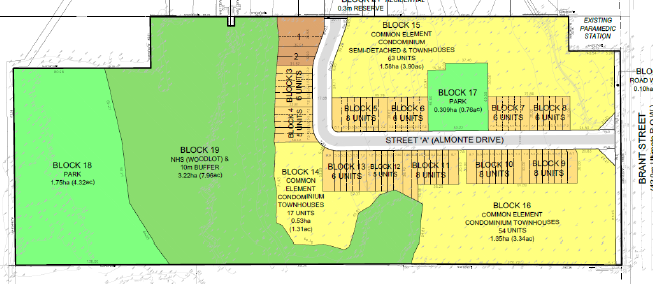 Think traffic flow onto Brant – and pity those that want to make a left hand turn on Brant in the morning rush hour.

 By Staff By Staff
April 22nd, 2020
BURLINGTON, ON
Proposed Development
A proposal has been submitted for the development of 12 townhouse blocks with a total of 83 units and three condominium townhouse blocks with 150 units. Also included in the application are a woodlot block as well as a natural heritage system (buffer) block. The proposed development has a total area of 11.1 hectares (27.2 acres). These lands are currently vacant and have been historically used for agricultural purposes.
LPAT Appeal Update – April 22, 2020
Is this progress?
At its meeting of April, 20, 2020 Burlington City Council approved the recommendation of Confidential Legal Report L-10-20 to accept an offer to settle the issues in dispute between National Homes (Brant) Inc. (“National Homes”) and the City with respect to National Homes’ appeal currently before the Local Planning Appeal Tribunal (“LPAT”).
As part of this approval, Council approved the recommendation that the planning analysis attached as Appendix ‘B’ to L-10-20 be released publicly and posted on the City’s webpage under Planning and Development Applications for Ward 1, while retaining solicitor/client privilege over the balance of this matter in its entirety.
The settlement between the City and National Homes resolves the issues in dispute between the City and National Homes on the basis that National and the City will seek LPAT approval of a revised development proposal for the subject lands.
The revised development proposes 210 dwelling units in townhouse, street townhouse, and semi-detached dwelling forms abutting public and private roadways, surrounding a 0.31 hectare centrally located Park block.
In particular, the revised development plan makes changes to where the proposed development inferfaces with the existing residential neighbourhood to the north, reducing the unit count in the area and replacing proposed 2-storey townhouses with 1.5-storey semi-detached bungaloft units. The revised development plan also increases the minimum building setback for the proposed semi-detached units backing on to existing lots on Havendale Boulevard from 9 metres to a minimum of 10 metres.
A copy of the planning analysis is available on the development application webpage, along with a copy of the conceptual site plan and proposed plan of subdivision for the revised development.
How does this impact the hearing scheduled to commence on July 27, 2020?
While the City and National Homes have settled the City’s issues in the appeal, there are two other parties to the hearing- the Region of Halton and neighbourhood association Vision 2100 Brant. As a result, the appeal hearing will proceed on July 27, 2020 with the City and National Homes attending to seek LPAT’s approval of the revised development plan and to respond to the evidence called by one or both of the other parties in opposition to the revised development.
Should the remaining parties both individually reach a settlement with National Homes in the appeal, the parties could seek to have a settlement hearing scheduled in advance of July 27, 2020 in order to present the settled plan to LPAT for approval. If that were to occur, the hearing scheduled to commence on July 27, 2020 would not be held.
The City’s development application webpage for 2100 Brant Street will be further updated to advise of any additional settlements between the other parties and National Homes or the rescheduling of LPAT hearing dates.
If the LPAT hearing proceeds, the good people in the Havendale community are going to find themselves city at a table with the city on the other side opposing what they want.
The Vision 2100 document and the delegations that were part of the protest against the development was one of the very best the Gazette has seen in the past ten years. A new city council was elected to oppose this kind of over-intensification.
It would be nice to know just how each Councillor voted on this matter in that Closed Session of Council.

 By Jim Young By Jim Young
April 16, 2020
BURLINGTON, ON
I have lived on Silwell Court, which backs on to the controversial 2100 Brant Street Development, for 28 years. I know the neighbourhood and the people involved, they were my neighbours. I also know John Calvert; a quiet, capable former Mississauga city planner. He and I share notes on planning issues and I am always the wiser for his thoughts.
Like John, I worked for change at the last municipal election, hopeful that those changes would bring greater local resident input on city plans. Also, like John, while happy with much of our new council’s work on Transit, Climate Change and the recent Covid-19 crisis response, I am equally disappointed in their approach to land planning issues. His Op-ed piece on 2100 Brant Street and the Gazette picture juxtaposing the proposed 233 units with the 236 surrounding homes says all that needs to be said about over-intensification, poor planning and design.
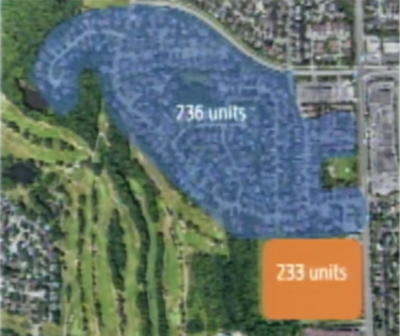 The blue area denotes the Havendale community with 236 homes. The orange area is the proposed National Homes development where 233 homes would be built. But greater than any objection to that development is my fear that the process to approve it indicates how future planning applications will be handled and resolved by the city. A process that not only limits the public input electors demanded in the 2018 council rout, but leaves us wondering whether it is an unfortunate confluence of conflicting provincial / municipal planning ideologies or intentional city planning policy; forsaking local input for expediency.
First it is only fair to point out that, even with the best of intentions, municipal planners are severely limited by The Ontario Planning Act. Developer amendments to zoning bylaws and official plans, are assessed, not necessarily on the local impact or wishes but more on how they comply with provincial planning legislation and guidelines. Also, the time for city planners to assess those amendments is severely limited by the Planning Act. Even the much debated Official Plan, still in the works after so many years, must comply with The Act and subsequent provincial guidelines on density, transit and mobility.
The land use planning, amendment and appeals process was already complex and changes by two successive provincial governments and an ongoing Official Plan review by the city have made the whole process so complex as to be un-navigable by planners and unintelligible to us mere citizens.
The old process was: The city’s Official Plan regulates what may be built. Developers who wanted to deviate from that submitted amendment applications to the city are approved or disapproved. Prior to submitting the application, developers held a statutory public meeting to inform residents of the proposed changes. Cities had 120 days to respond to applications. Developers could appeal unfavourable planning decisions to the OMB (Ontario Municipal Board). Failure by the city to respond in time was also grounds for an appeal by the developer.
The first change, in early 2018, saw the OMB replaced by LPAT (Local Planning Appeals Tribunal), a supposedly more municipal and resident friendly body. It allowed 180 to 210 days for cities to respond to amendment applications and made it, theoretically, easier for local residents to contest developer proposals. Before any of this could be tested, the Provincial election that year changed the government.
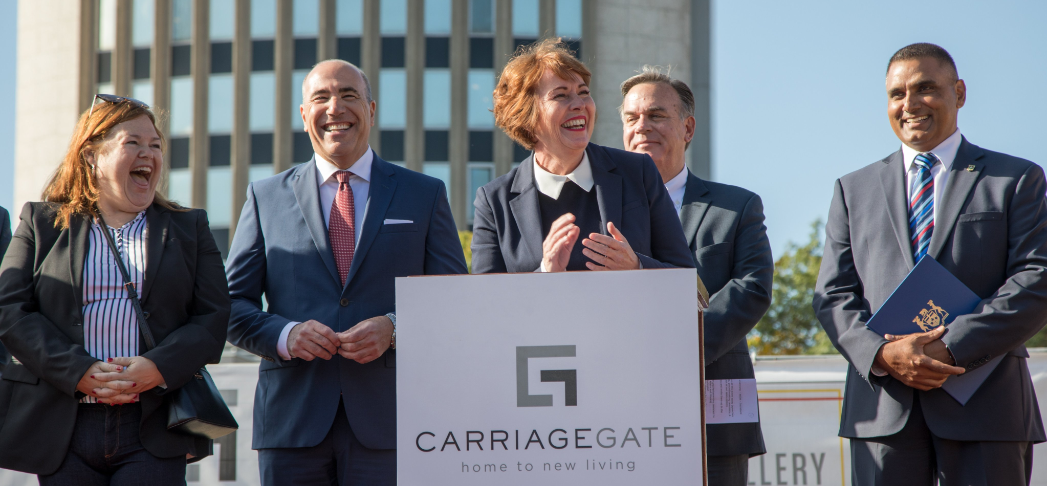 Burlington MPP Jane McKenna at the ground breaking of The Gallery, the 23 storey tower going up opposite city hall. The provincial government delivered regulatory changes that kept developers smiling. With that change, a more development friendly government cut amendment application response times to 90 or 110 days and changed much of the amending criteria in favour of development. In a city which still had no official plan in place and a large number of pending applications, this was an impossibly tight deadline to meet. Throwing further confusion into this was the Review of the Official Plan, demanded by the electorate and concentrating on the downtown.
In a bid to allow planners time to develop the new official plan free from ongoing amendment applications the city froze the planning process using an Interim Control Bylaw. (ICBL)
We can argue whether this was undertaken properly, if the (ICBL) was successful? If the Downtown Transit Hub should have been addressed first? If the revised downtown plan is any better? But those are arguments for another column.
The outcome has been that on top of all the in-process amendments, frozen by the ICBL, developers lodged a further thirty one appeals to LPAT opposing the new plan and the ICBL. Add to this a city and a province beset by a Covid 19 lockdown and the whole process has simply seized up. Applications are frozen again, LPAT appeals are suspended and there seems to be confusion about whether the application deadline clock is still ticking or not. An email from Heather MacDonald, Executive Director, Community Planning Regulation and Mobility suggests to me the clock is frozen too, an article in the Gazette, April 14 suggests the issue is being debated at the province but there is no decision as yet.
The debate now becomes: Is the city a victim of powerful and shifting provincial planning whims? Or is the city happy to hide behind a land planning regime it cannot win against and capitulates to quietly while still disingenuously proclaiming its defence of resident interests?
I am beginning to believe the latter. Reading John Calvert’s plea to our mayor, one might reasonably conclude that the city’s new approach to planning amendments is: Receive the application. Sit on it until the response time runs out. Let the developer appeal to LPAT, then negotiate a settlement agreement with the developer with almost no input from local residents.
I worry that, with the city’s planning in an unresolvable mess and aware that municipalities are virtually powerless anyway, our elected council has found a way to live with a pro developer provincial planning regime while shrugging off responsibility for the outcomes.
I further worry that in a “Covid Shutdown” political environment, what little resident or municipal input exists in the planning process will be further eroded by meetings in camera, with no traditional citizen delegation.
Related news articles:
Calvert letter to the Mayor on trust
The pain Calvert carries
Marianne Meed Ward on trust.
 Jim Young is an Aldershot resident who delegates at city council on transit and local development. He is consistent in his mission to ensure local government is transparent and accountable to the people who elected them. Jim Young is an Aldershot resident who delegates at city council on transit and local development. He is consistent in his mission to ensure local government is transparent and accountable to the people who elected them.

 By Pepper Parr By Pepper Parr
April 14th, 2020
BURLINGTON, ON
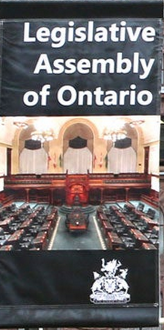 A breath of fresh air ? Included in the debate in the Legislature today was a decision “making it possible to suspend certain municipal planning decision timelines during the state of emergency, and change the Development Charges Act to ensure municipalities can continue to count on a vital source of revenue that helps pay for local growth-related infrastructure, such as roads, water and sewers as well as fire and police services.” A breath of fresh air ? Included in the debate in the Legislature today was a decision “making it possible to suspend certain municipal planning decision timelines during the state of emergency, and change the Development Charges Act to ensure municipalities can continue to count on a vital source of revenue that helps pay for local growth-related infrastructure, such as roads, water and sewers as well as fire and police services.”
The announcement was made in the Legislature – we now have to wait for the specifics that will be released by the Minister of Municipalities and Housing.
Many will wait to see what reference is made, if any, on the processes and procedures that apply to Local Planing Act Tribunal.

 By Pepper Parr By Pepper Parr
April 14th, 2020
BURLINGTON, ON
I didn’t know John Calvert. I knew of him. He was Director of Planning in Mississauga at a time when Hazel McCallion was Mayor – and he survived – Hazel was one tough cookie.
I was sent a copy of the letter Calvert wrote to Mayor Marianne Meed Ward expressing his profound disappointment on how the National Homes development on Brant was proceeding.
John Calvert has lived in Burlington for more than 30 years. Watching the shape, look, and feel of the city disintegrate has bothered him for some time.
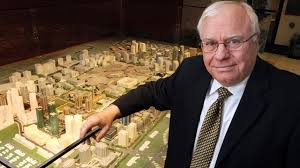 John Calvert: Deeply hurt and disappointed I had to ask a friend for contact information and see if Calvert would take a call from me.
He said he would and we had a ten minute talk.
I heard a very distraught man who was deeply hurt talk about the Due Process that he did not feel had taken place and the need for public input on planning decisions.
He agreed with me that people were excited when Marianne was elected Mayor – many believed that the development proposals on the table were going to ruin the city.
Calvert said he “likes Marianne” he just didn’t seem to like what she was doing.
“It took me some time to write the letter” said Calvert. “I showed it to my neighbour Ed Doer who was heavily involved in the opposition to the National Homes development; he said I had written what needed to be said.”
When Mayor Meed Ward went to France to take part in the 75th WWII anniversary she went with Calvert’s wife who was one of the Burlington residents who made the Juno Beach reception centre possible. Calvert told me that the two women travelled together and got along very well.
Calvert said he was asked to speak at one of Meed Ward’s campaign funding events. “I did so willingly” said Calvert
Calvert knows the ins and out of the planning profession. He told me that the communities we build today will determine the kind of society we will have a couple of decades later.
He talked about the lack of amenities in a community that was to have 233 homes – which may have been chiselled down to 215.
“The traffic problems will be horrendous.”
Calvert hopes that this Council decides to take a sober second look at what is being proposed.
The issue for Calvert is trust and quality in developments. By quality he doesn’t mean quartz counter tops and shiny high end stoves. He means space for people to live, back yards where there is room for one of those large Italian families and parks where children can play and enough room for a child to learn to ride a bicycle.
Calvert said he was excited when Meed Ward came along – mistakes that had been made were going to be corrected. Now it doesn’t look that way.
“Someone has to stop this” he said
Related news item:
The Calvert letter
Salt with Pepper is the musings, reflections and opinions of the publisher of the Burlington Gazette, an online newspaper that was formed in 2010 and is a member of the National Newsmedia Council.

 By Pepper Parr By Pepper Parr
April 14th, 2020
BURLINGTON, ON
She broke his heart – he truly believed that after working his buns off to get her elected that she would not sell him out – the Mayor has lost a fan.
 John Calvert John Calvert, former Chief Planner for the City of Mississauga when Hazel McCallion was Mayor wrote Marianne Meed Ward saying:
Madam Mayor
Trust, Honesty and Commitment are the qualities I value most in family, friends and colleagues.
It appears that Council is considering a settlement agreement with National Homes on their application for a townhouse development at 2100 Brant Street.
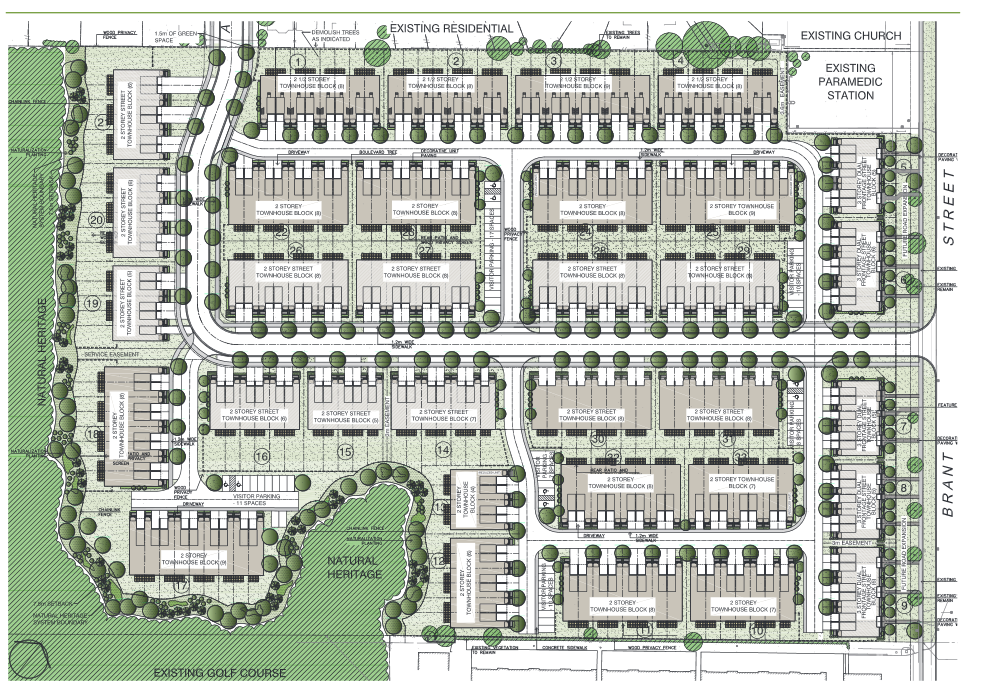 A planned 233 homes for the property on Brant Street It pains me to write this letter after all you did on the file, as a Councillor and Mayor, and the extensive work by Vision 2100 Brant, in addition to the commitment I made to your campaign. I am so profoundly disappointed and personally offended in this process and possible outcome.
 It has been a farm field for decades – owned by the Catholic Church. Then a developer saw an opportunity. This file is a critical example of where you could demonstrate keeping your campaign promises which all residents expected.
I regret having believed that you would actually fulfill your two main campaign promises – to oppose over-development and improve public engagement. The proposal for 2100 Brant is probably the worst case of over-development the City will experience (except the mess being made of our downtown) and yet you appear to support it.
The current planning process in Burlington, which is not practiced by other municipalities, consists of ….file an application…no decision….appeal to LPAT…settlement hearing. This not only denies Due Process but takes away residents’ rights.No public input into the settlement. It is not what we were told after this Council rescinded the 2018 settlement. We were told no more settlement hearings. Tell that to the residents along Townsend Ave after settlement hearings at 92 and 484 Plains Road. You supported these two settlement hearings.Why are the majority of development applications decided by LPAT and not Council?
You agreed that staff were compromised on the 2100 Brant file and the City would retain an outside planner to review the file, and if required, would be the expert witness at the LPAT hearing. The planner would be retained by the City and for the City. The planner was not for Vision 2100 Brant. It was your decision and now, at the last minute, there is a change of mind.
At the second LPAT Pre-hearing (April 3. 2019), Legal staff told the LPAT Chair that the City would have two Expert Witnesses, a land use planner and a traffic engineer. The Chair gave us permission to “umbrella” or use the City’s witnesses, and made no mention that each Party needs to provide their own independent witnesses. Check the minutes of the Pre-hearing. Once again, the residents are disappointed.
 The intensification is obscene. The blue area denotes the Havendale community with 236 homes. The orange area is the proposed National Homes development where 233 homes would be built. Have you challenged staff on why 2100 Brant is not compliant with the Official Plan policies on Compatibility based on the Intensification Strategy? Why have an Official Plan if the residents cannot count on Council to address the policies in their decisions? In addition, how can you support the need for 26 variances to the zoning development standards to allow National Homes to overdevelop the site?
Do you really think this is Good Planning? What impact will it have on the rest of the City? If you support it here, what does that say to all residents? This will be a precedent established by this Council. This is exactly what residents expected you, and the new Council, to oppose on our behalf.
I feel you did not keep your promise for the Downtown. How could you not remove the MTSA designation for the John Street bus stop and why hasn’t the City filed a motion with the Province to review the location for the Urban Growth Centre following MPP McKenna’s letter? The numerous delegations were counting on you to protect the Downtown by avoiding developers using these elements to ask for increased height and density as in the Adi application. Again I feel let down and unfortunately I am not alone.
I commend your leadership and time commitment in dealing with the COVID-19 pandemic, but feel compelled at this time to make my feelings known prior to the next Council meeting where the apparent settlement agreement might be dealt with. All of us are counting on you, and our elected councillors, to support us and the City at large will expect the same when this is all brought to light.
Related news stories.
Meed Ward’s view on September 2018
New council gets the development – what do they do?
Council gets another chance to debate the development

 By Staff By Staff
March 27th, 2020
BURLINGTON, ON
The City has had to make changes to various timelines and processes related to Planning and Building and By-law matters.
“To that end, the Statutory public meeting scheduled for April 6 on the official downtown policies has been pushed to fall to better enable the public and all stakeholders an opportunity to provide full feedback to staff and Council as decision makers, in a public and accountable forum.
“The City is currently processing development applications and building permit applications received by March 13.
The Local Planning Appeal Tribunal (LPAT) has suspended all LPAT hearings until the end of June. As a result of COVID-19, processes for building inspections have been modified accordingly to keep both staff and the public safe.
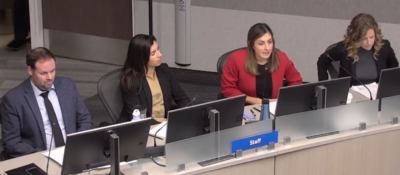 Detailed policies on the Downtown are being developed by the consultants and staff – preparing them for public review Official Plan Update
Over the past few months, the Official Plan project team with help from planning firm, SGL Planning and Design, have been working on developing detailed policies.
“The endorsed land use vision and built form concept for the Downtown was largely endorsed by Council this past January. The detailed policies were going to be available for public review during the week of March 23 and presented to Council in April 2020 as recommended modifications to the policies of the Adopted Official Plan.
“However, these timelines have been delayed to protect the public and City staff and to help minimize the spread of COVID-19 virus, the City has closed facilities, including City Hall. These closures and workplace changes have had an impact on the project timeline. As a result, the public release of the detailed policies and associated reports will be delayed.
“The detailed policies will now be released at the end of April and the Statutory Public Meeting will be scheduled for the fall.
The City recognizes the work of the Scoped Re-examination of the Adopted Official Plan is vitally important to continue to move forward.
The City remains committed to ensuring the public has the full ability to comment on the detailed policies and for this reason, the associated timelines have been changed.
Planning Applications
 • Development applications received by March 13, 2020 are currently being processed. • Development applications received by March 13, 2020 are currently being processed.
• Inquires continue to be handled by Planning staff via phone and email.
• Staff are exploring how new applications might be accepted and processed.
• No Pre-application public meetings will be held at this time, including Millcroft Green, and will be re-scheduled at a later date.
The Local Planning Appeal Tribunal (LPAT) has suspended all LPAT hearings scheduled to take place between March 16 until the end of June.
The cancelled hearings will be rescheduled at a later date. Currently, hearings July onward will proceed on their scheduled date. Burlington applications affected include:
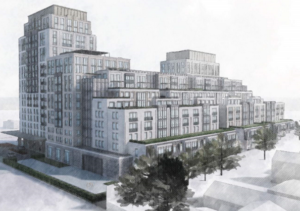 Amica – proposed development • March 20 – HHHBA Appeal of Parking rates- first Case Management Conference
• March 20 – 1085 Clearview/St. Matthews- a telephone CMC
• April 17 – 1157 Northshore Blvd (Amica)- a telephone CMC
• April 30 – 2069 Lakeshore /Pearl Street (Carriage Gate)- first Case Management Conference
• May 11 – OPA 107 (Evergreen)- a Case Management Conference
• May 19 – 1085 Clearview/St. Matthews- Hearing
There were no Burlington hearings scheduled for June.
Building Permits and Inspections
• Building permit applications received by March 13, 2020 are currently being processed.
• Staff have implemented a modified level of building inspections. Exterior building inspections continue and a modified process for interior inspections is in place that does not involve staff going into buildings and protects staff from physical contact in line with COVID-19 safety precautions.
• Staff are exploring how new applications might be accepted and processed.
Signage in Commercial Districts
 City hall told the merchant signs like this were a no, no. • A-frame signage on private property is still permitted in front of any business during regular business hours and no permits are required.
• Portable sign permits and renewals are still being processed by sending necessary information to building@burlington.ca.
Business License Renewal
• Existing business licenses that require renewal will be extended during the COVID-19 crisis.
 Mayor Marianne Meed Ward Mayor Marianne Meed Ward had this to say: “This is an extraordinary and unprecedented situation we’re facing, and we know it won’t be business as usual for some time. As a City, we’ll continue the operations we can, while putting the health and safety of our community and employees first.
“Our downtown policies and Official Plan are vitally important to our entire community. We want to ensure the public and all stakeholders have the opportunity to provide full feedback to staff and council as decision makers, in a public and accountable forum. This work is appropriately put on hold till we can provide that opportunity. Releasing the policies early affords everyone significant time for review and comment, before decisions are made. This is perhaps the silver lining in this situation. ”
Heather MacDonald, Executive Director of Community Planning, Regulation and Mobility Community Planning added: “The City continues to process applications received prior to March 13th and City staff remain available by email and phone to connect and answer questions. In light of the situation with COVID-19 and the rapidly changing updates from healthcare professionals and our partners across all levels of government, our priority remains on keeping staff and the public safe. Since March 16th, City Hall remains closed to the public and we will continue to do our best to ensure transparency and accountability to the public while protecting our staff and the public.”
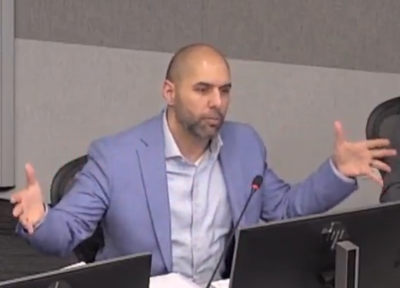 Nick Anastasopoulos, Chief Building Official / Director of Building & By-law Nick Anastasopoulos, Chief Building Official / Director of Building & By-law explained that: “Our primary focus is on the safety of the public, our staff and buildings in our city when we do our building inspections. Exterior building inspections are continuing with our normal process and the reality of COVID-19 has made us look at creative ways to deliver on interior inspections. We have created a modified process for interior inspections to respect physical distancing and avoid the need for staff to go into buildings. We appreciate the continued understanding of our community as we continue to address this challenge together.”

 By Staff By Staff
March 8th, 2020
BURLINGTON, ON
The public record indicates that:
Gord Buck, developer “ARGO Land Development (Argo (Millcroft) Limited)” paid $5M to Edward Liptay President “Millcroft Golf Club (2079610 Ontario Ltd.)” for 131.80 acres on January 29, 2020 for a 50% interest in the land.
$3M cash with a $2M vtb mortgage for two years at 0%.
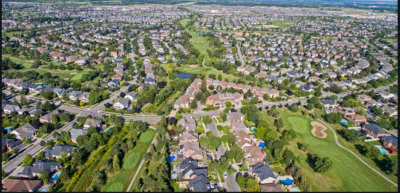 Millcroft: A large well established community built around a golf course. Our source asked: “Does Gord Buck lives in the Millcroft neighbourhood?”
“This is going to be an interesting exercise in watching the threat of potential land development unfold and the impacts on the neighbouring housing backing onto the golf course; it is unlikely that there will be any new housing built on the golf course lands if evidenced alone by the purchase price; at the very least, this will be one of the most heated fights to watch and how the local Councillor gets killed. Those people who are directly affected are going to lose their minds.
“There may potentially be something else going on here.
“Also, not sure if the City missed this situation during the Official Plan review process; must check and see what the proposed OP designation is, not the zoning.”
The source is a professional with deep knowledge on land assembly. For personal and professional reasons we are withholding the name of the source of the information.

 By Pepper Parr By Pepper Parr
March 6th, 2020
BURLINGTON, ON
It is still coming out in dribs and drabs but at least the people who are going to have to pick up the tab for the legal challenges to the January 30th council decision unanimously approving the revised recommendations from the findings of the Interim Control Bylaw (ICBL) Land-Use Study, including the approval of the proposed Official Plan (OPA) and Zoning Bylaw (ZBA) amendments resulting from that study, now know a little bit more.
The Council decision was made before the one-year ICBL deadline of March 5, 2020.
In remarks in the Mayor’s March Newsletter we learn that:
“The recommended OPA and ZBA are the result of an extensive technical review by third-party consultants and City planning staff, public input (including written and oral submissions from the development industry), and Council deliberation.
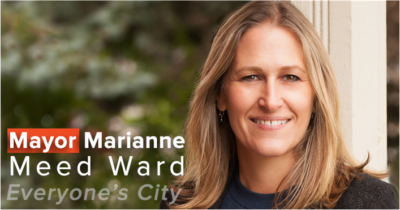 Mayor uses March Newsletter to dribble out a little bit more information on the legal challenges to the recent flood of appeals to LPAT. “Our current Official Plan (OP) is in full legal compliance with all applicable provincial documents, as are its approved updates, after the province’s Places to Grow Act and the density targets that were established and embedded into our OP. This latest update dealt with better defining the Major Transit Station Area (MTSA) that to this point had never been defined.
“Since Council’s decision on Jan. 30, the City’s OPA and ZBA have been appealed to the Local Planning Appeal Tribunal (LPAT). These appeals will extend the ICBL’s development freeze on the downtown and Burlington GO area until they are resolved. It’s important to note, the appeals to the City’s ZBA are what caused the freeze to continue — the OPA appeals would not have.
“The bulk of the number of appeals dealt only with the OPA. If the remaining appeals are resolved quickly, the development freeze would be lifted. It is typical and expected that the most likely course of action may be a grouping of these appeals to LPAT, where they address similar issues. That remains to be seen.
“Official plans are constantly changing. Burlington’s OP has changed 119 times (since 1997). Some of those changes the City initiated, others were developer initiated (those who had applied for OPAs and ZBAs). Plans never stay the same and we have a legal obligation to update our OP every 5 years. Those updates can be through minor tweaks or complete overhauls — Burlington has done both in its history.
“Changing an OP is normal practice, as is the number of appeals and reaction when a significant change to an OP is made.
“In the past, the City of Burlington has found itself in a difficult situation when staff’s and Council’s positions related to our OP differed — that is not the case now. Our City also found itself in a difficult situation when it gave away height and depth to development applications that far exceeded what was in our plans out of fear of being taken to the LPAT. Not only was that precedent-setting, but it sent the message that our City would make significant exceptions at the mere threat of an appeal.
 Mayor Meed Ward: Stay the course — your Council and City staff will be doing just that. “We’re not doing that anymore. We are now making decisions that are founded on sound planning principles based on evidence and a one-year independent consultant study. That is what residents expect us to do. The City of Burlington did not elect me to surrender. We will defend the policies we created — and were unanimously-approved by Council — vigorously.
“These policies also reflect the vision of staff, council and our residents for the future of our city and we will remain steadfast in our commitment to ensuring the right development in the right place at the right scale.
“I recently received a note from a resident that said they knew this wasn’t going to be easy, but to stay the course — your Council and City staff will be doing just that.”
It is now clear that the Mayor, the senior planning people, the city’s solicitor and, perhaps, whatever outside counsel the city has hired, have spent a lot of time going over the documents – which the public has yet to see.
Whenever politicians withhold information, or slip it out on a Friday afternoon, you know that the full story is not being told.
A tighter look at the Newsletter content tells us that “the appeals to the City’s ZBA (Zoning Bylaw Amendment) are what caused the freeze to continue — the OPA appeals would not have. Not sure what the relevance of that is – we will talk that over with our planning consultants.
The “bulk of the number of appeals dealt only with the OPA”, which the Mayor tells us can be dealt with very quickly.
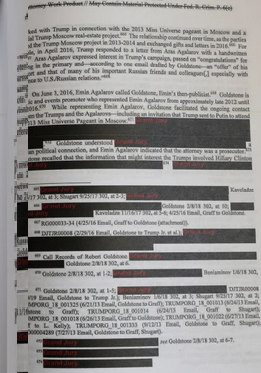 Politicians tell you what they want you to know – seldom do they tell you everything you are entitled to know. We have a Mayor who touts the importance of media but has yet to call a media conference and make herself available for questions. There was a time when you couldn’t keep the woman away from television camera lights.
Meed Ward was once very fond of using the phrase “truth to power”; haven’t heard that one from her lately have we?

 By Staff By Staff
March 6th, 2020
BURLINGTON, ON
The developers who are either building residential towers that are 20 stories plus or have applications to build have a point of view.
Few of them do interviews but they do have trade journals that will publish what are really “canned” paid-for articles setting out their view of developments in Burlington.
Nick Carnicelli, president of the Halton Hamilton Home Builders Association, gave his view on the Outlook for 2020.
Carnicelli is a major Burlington developer with one project completed, another with shovels in the ground and a third that is a concept at this point.
 Nick Carnicelli, President, Carriage Gate Homes He was interviewed by Condo Life, a magazine that promotes developments and provides background information for people in the housing market. We are reprinting that article.
Condo Life: How do you see the outlook for the new home industry in 2020?
Carnicelli: We are going to see a very positive market. Spring will be very strong, with a number of very exciting projects coming forward. A diverse selection of housing will be available that will meet the many needs of new-home buyers. With interest rates remaining relatively low, and a strong influx of immigration, the economy will remain strong.
CL: And for your company?
Carnicelli: We think 2020 will be Carriage Gate‘s biggest year, following a very exciting 2019, with the launch of our Roxborough Park development. This is the largest development we have ever been involved in. The project will feature a dynamic and affordable mix of housing types in Hamilton’s east end – three-storey towns, back-to-back towns, affordable and market rental apartments.
CL: What is your company doing to address the issues facing the home-building industry – namely, affordability and new home supply?
Carnicelli: Carriage Gate continues to innovate and bring new products to market to address housing supply and affordability. We work with a talented team of individuals and many of the industry leaders to meet homeowners’ needs. Our newly expanded construction team will lead, our renowned architects and creative consultants will innovate, and our customer-centric team at Carriage Gate will push the envelope to find new creative approaches to homeownership. The Roxborough Park master-planned community coming in spring 2020 will introduce a wide variety of home styles and address more affordable housing options.
CL: What more could the industry do to address these issues?
 Nick Carnicelli – the man with four towers either built, under construction or at some stage of application Carnicelli: The building industry must not be complacent. We must continue to work with all levels of government to spearhead many of the changes needed to support our ability to provide affordable, high-quality housing to meet the needs of a diverse range of home-buyers. Our industry does more than just build housing. We must work together with our municipal partners to create “whole” communities with a full complement of services and amenities to improve the quality of life, not only for the existing residents but for future generations.
Now more than ever, municipalities must work together to bring forward the changes needed. In many instances, the municipalities may not have a staff complement that is familiar with the types of development and redevelopment proposals that we’ll be bringing forward. These municipalities need our continued support. At Carriage Gate, we work closely with our municipal colleagues to promote the efficient review and consideration of new applications and many of the new and emerging municipal initiatives that fundamentally impact our business. We encourage the building industry to do the same.
CL: What should prospective new-home buyers know about your company for 2020?
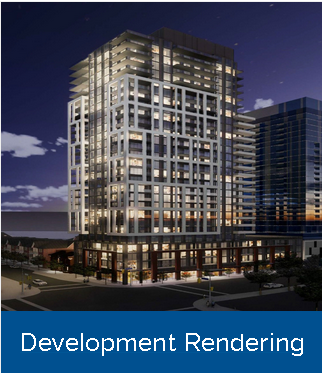 Carnicelli’s proposed development for Lakeshore Road and Pearl Carnicelli: We are committed to continuing to bring innovative and high-quality projects to market. Construction will move into high gear
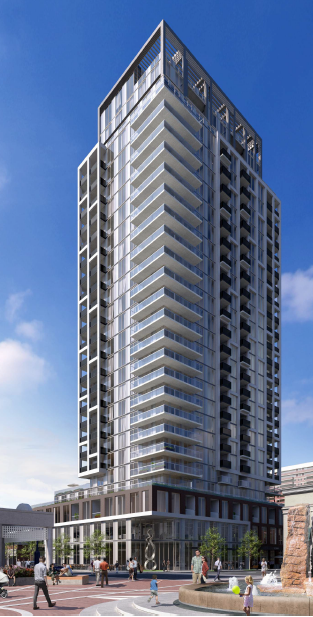 The Gallery – under construction opposite city hall at Gallery Lofts + Condos in downtown Burlington, with occupancy planned for 2022. Roxborough’s new master-planned community will come to market, in which Carriage Gate will play an integral role in the revitalization of downtown Hamilton, with the launch of one of the city’s biggest inner-city developments. We will forge ahead with the planning of a number of new condo projects through public engagement and consultation with our key stakeholders, and are looking forward being a part of downtown Burlington’s exciting evolution.
CL: Why should prospective new-home buyers consider buying from Carriage Gate in 2020?
Carnicelli: Burlington may just be the best place to live in Canada. It offers residents a safe and friendly environment as well as fabulous restaurants, shopping, festivals, events, a culturally rich arts community, and access to the Niagara escarpment.
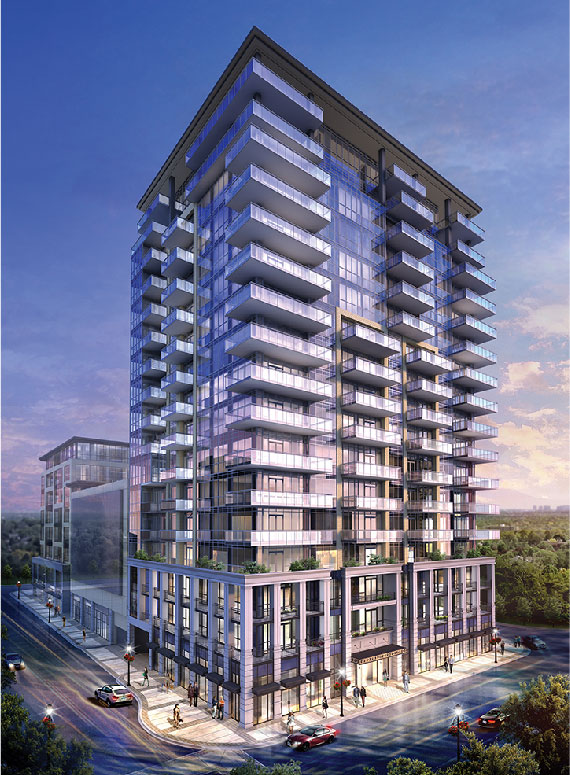 Sold out – occupied. The development was part of a three phased project – the other two are going nowhere at this point. Carriage Gate’s first downtown condominium, The Berkeley, geared to transitional buyers who appreciate a luxurious hotel-style environment, occupied earlier in 2019.
Our next project, Gallery Condos + Lofts at 421 Brant Street, is now under construction, with occupancy to begin in 2022. Located directly across from City Hall in the heart of downtown, Gallery Condos + Lofts is within walking distance of everything you could imagine.
 On Lakeshore as you enter the downtown core. If built it will be stunning. and change the way Burlington is seen as a city. Available suites range from 500 to more than 1,600 sq. ft., with layouts that will appeal to everyone from young buyers looking for their first home, to mature adults seeking to downsize, but who still want space for entertaining family and friends. Carriage Gate continues to be an integral part of downtown Burlington’s exciting evolution, with a number of projects in the planning stages.
Specializing in the construction of high-quality homes, modern condominiums, commercial developments and urban high rise communities, we embrace the future, appreciate the past and celebrate the dedication that has brought us to this point, where we can ensure our commitment of being “Home to New Living.”

 By Pepper Parr By Pepper Parr
March 6th, 2020
BURLINGTON, ON
The frantic emails came in at 5:47 pm; then 5:55 pm and again at 6:04 pm
The writer was frightened – the person had written a comment in the Gazette on the Millcroft story and thought she had to provide her full name for authentication.
Her comment, which is published as Name Witheld said:
Where is this developers conscience? How much money is enough? For residents who have their life savings in their home, with respect Mr. developer, how do you sleep?
These are seniors, couples, families who invested in a dream. We live both on and off the golf course. We are not rich, we work hard because we love our community, our schools, and our greenspace.
Safety? Please do not hide behind this pathetic excuse. Sweet dreams, Mr. developer.
You have one hell of a fight coming your way!
The emails to us went:
I am a resident of Burlington who today wrote a Letter in response to the MAD story. I did not know that you would use my full name. Could you please remove my last name and just call me xxxx. I am very frightened as I’m alone with two kids right now. I did not intend for my full name to go out there. Please can you help me. It says it is being reviewed.
Minutes Later
Please do not use my name in the opinions column currently being moderated. I thought I had to put my full name just for you to authenticate. I am a scared mother of 2. Please either remove or change my name to xx.
Thank you! Please let me know ASAP
Later
Hello I mistakenly used my full name in your editorial option section about Millcroft March 4.
Could you please remove the opinion or at least write me as xxx not my full name. I thought I had to leave my name for authentication. I did not want my last name used. Please help me.
Please understand I’m terrified.
Later
Hello, I wrote an opinion on the mad article. My name is xxx xxx can you please not use my last name. I am a scared mother as it is. Please just call me Please. I’m going to lose sleep over this. I thought I had to put in my full name.
Thankyou… please either erase it or just use my name xxx.
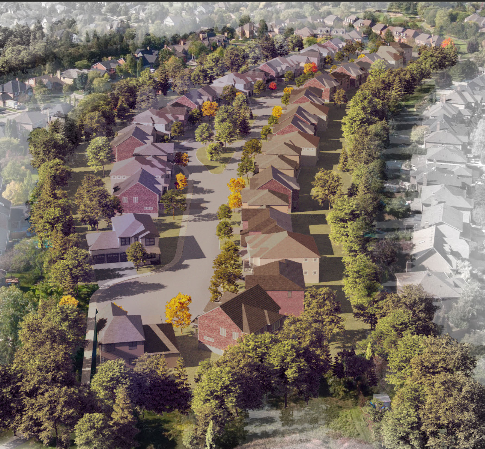 The full colour is part of the housing stock Argo Development wants to add to the Millcroft community. The grey part is development that already exists. We published the comment and find ourselves asking: what kind of a city is this – that a person would fear that they would be harmed for saying what they think.
The number one city in the country eh!
Related news story:
Scope and scale of the development

 By Pepper Parr By Pepper Parr
March 5th, 2020
BURLINGTON, ON
Those troubling 31 appeals to the city changes in the Official Plan?
Here is what we know.
On January 30th, the city passed an amendment to the Official Plan and made changes in the zoning for some of the property.
The city had the power to do that. Most of the current council was elected to bring about a change in the Official Plan and the zoning bylaw.
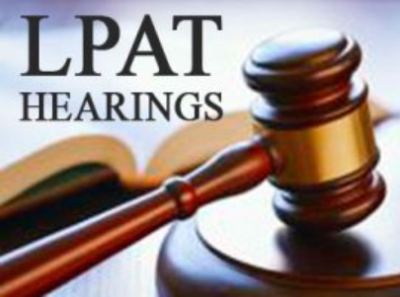 The Mayor declared at the time that it was an historic day for the city. It may well be historic – but for a different reason. The Mayor declared at the time that it was an historic day for the city. It may well be historic – but for a different reason.
Anyone who doesn’t like the change in the bylaws, in this case the Official Plan and the existing bylaw regimen, has the right to appeal.
No one expected or was prepared for the 31 appeals that were filed within the 20 day appeal window.
 Heather_MacDonald, Executive Director – Planning. Executive Director Heather MacDonald did say that appeals are not unusual and there were hints from some of the planners and legal counsel that were delegating to city council that appeals might be forthcoming.
But 31 of the things? That is astounding and troubling on several levels.
We do not yet know just what the appeal documents say. We do know, or suspect, that they are appeals against the change in the Official Plan and the change to the zoning bylaw. Even that is speculation – the public has not seen the documents. The Mayor has, the Executive Director of Planning Heather MacDonald has, as has Nancy Shea Nicol, the Executive Director – legal.
We know that the members of Council have been briefed – to what degree is not certain. They have all lost their tongues.
The 31 appeals that were filed were delivered to the City Clerk. The Clerk has 15 days to send the appeal documents along to Local Planning Appeal Tribunal ( LPAT), the body that hears the appeals. That 15 days is reported to end on March 12th.
The members of LPAT are appointed by the province who, recently, appointed additional hearing officers and, troubling, decided not to re-appoint some hearing officers who had the reputation of being concerned about the environment but appointing several that come from within the development industry.
 Marianne |Meed Ward: A Mayor with a vision and an agenda that has run into some heavy waves. The Mayor has said she would make the appeals public but has yet to do so.
At some point the specifics of each appeal will become public.
In the meantime people in Burlington who pay attention to these things are concerned about:
1) What is it going to cost the city to fight 31 different appeals?
2) What if the city loses at the LPAT level – going to Cabinet with a request to overrule LPAT isn’t viable with the current government.
3) Will losing the appeal mean that all the work done on a new official plan for the city is now all for naught?
4) And what if, adding insult to injury, the city is stuck with the costs of the appellant?
It is the uncertainty that bothers the people the Gazette is hearing from: “Can’t the Mayor say something” is the phrase we are hearing most often – and not from just a handful of people. Scores is a better unit of measure.
Was the Mayor in over her head with the approach she took?
Did she ask the hard but appropriate questions to staff – like what could go wrong?
Risk is now a hot topic for the bureaucrats at city hall: was the risk on the approach taken by the city fully considered?
These are not polite questions but the answers are critical.
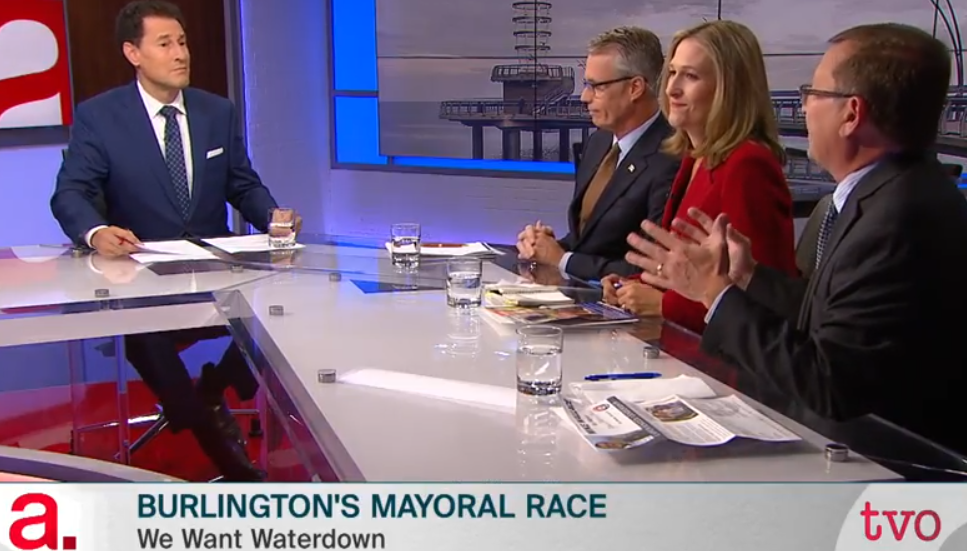 Meed Ward was superb in the TVO debate – well prepared and new when to pounce. The city isn’t seeing that same person during the troubles with the Official Plan amendment appeals. Marianne Meed Ward talks frequently about the need for media that serves the wider community and makes mention of her experience as a journalist. She was never a journalist – she has been an editor and did write a column for the Toronto Sun. She is very effective on television panel discussion programs. She was stunning on the TVO election debate.
Developers looked at the rules that were put in place when the Urban Growth Centre was accepted back in 2006. The city didn’t have to accept what the province handed out – Oakville didn’t. They negotiated different boundaries for the UGC.
The Mayor has hinted strongly that she intends to approach the province for a shift in the UGC boundary to something that begins at about Caroline Street rather than the current Lakeshore as the southern boundary.
 Nick Carnacelli, centre, listening in on a conversation between Mark Bales on the left and Rosa Bustamente a city Planner. Bales is a senior vice president with the Carnacelli real estate interests. The appeal situation is troubling – we don’t believe anyone expected the volume. The development community is making this their stand on what the current Mayor, and most of her council, want for the city.
The odds at this point are not on the side of the city.
Is the Mayor fiddling while the city burns?
She does use social media to get her story out but has yet to hold a media event where direct questions can be asked. Social media is, unfortunately, a one way tool – the writer says what they want to say and while you can comment there is really no give and take. The politicians love it that way – but it isn’t healthy for a democratic society.
Salt with Pepper is the musings, reflections and opinions of the publisher of the Burlington Gazette, an online newspaper that was formed in 2010 and is a member of the National Newsmedia Council.

 By Staff By Staff
March 4th, 2020
BURLINGTON, ON
If you live in Millcroft – you know all about this issue – Millcroft Greens is proposing a residential development on the Millcroft golf course. This development has the potential to significantly decrease existing property values, increase traffic, disrupt ecosystems and wildlife, reduce green space, lead to the rezoning of existing school districts, overburden infrastructure, and alter the character of one of Burlington’s most iconic neighbourhoods.
 The residents set out to create a non-profit organization called “Millcroft Against Development” (MAD) with a mission to preserve the integrity of the existing Millcroft golf course and retain its original and current zoning of “Zone O1 – Open Space. The residents set out to create a non-profit organization called “Millcroft Against Development” (MAD) with a mission to preserve the integrity of the existing Millcroft golf course and retain its original and current zoning of “Zone O1 – Open Space.
The developer has chosen to portray the development of additional housing on gold course land as a public safety issue – the residents aren’t buying it. They argue that the “recreational green space defines the Millcroft we all chose to make our home. It is the heart of the community and our purpose is to keep it whole. “
The development proposal eliminates the existing 6th and 7th holes entirely, shortens the 1st and 16th holes, and adds 98 new homes and several new roadways to the land. We believe that this proposal is merely the beginning of residential development of the entire golf course, with this phase alone eliminating a staggering 411 mature trees from our neighbourhood.
 It started out as a golf course that housing was built around – the residents loved it and paid a premium to live in Millcroft. The developer held a meeting in February at the Burlington Convention Centre where a development proposal was presented to a select group of residents whose properties would be most adversely affected. The developer cited “safety concerns” of errant golf balls as the impetus for the proposed development – calling it a public safety issue.
The presentation included a compensation package for the invited residents, which many view as a covert attempt to buy approval of its developmental plan.
A public meeting is to take place on March 23rd, at the Burlington Convention Centre.
It will be a doozy. There are 728 people registered on the web site opposing the development.
The City of Burlington has not yet received a formal development application from Millcroft Greens for this property.
Related new articles:
The scope and scale of the proposed development

 By Pepper Parr By Pepper Parr
March 4th, 2020
BURLINGTON, ON
The Gazette prides itself on maintaining a comment section. It gives space to people who have no other way of voicing their concerns. Are they always right? Hell no – there are a couple that are close to certified crackpots who entertain if nothing else; see it as our comics section.
The current flood of appeals to the LPAT has arguments on both sides of the issue. The following are comments that deserve a wider audience – thus our decision to publish them as opinion pieces.
 Albert Facenda, a small Burlington based developer Albert Facenda responding to Gary and Graham:
Gary and Grahame. You are correct that in 2005/2006 council conceded the downtown to the wishes of the Province. I believe it was the Liberals at the time. Our Mayor ran as a Liberal in 2007. Do we have any evidence that she was opposed to these decisions at the time?
Is she protecting the citizens of Burlington from over development in the downtown core as you have pointed out? I think not.
Environmentalists created the Green Belt with their doom and gloom scenarios. The Greenbelt created the shortage of land, creating Intensification the “Build up not out philosophy.” I don’t like intensification. But I will tell you the town of Grimsby was voted 2nd to Burlington as the best City to live in category. Take a drive through there and you will see construction everywhere. I predict Grimsby will be #1 this year. One of the reasons would be that it is the place to raise your family for those who can’t afford to live in Burlington. Remember what the Mayor said: ”The Downtown is only1% of Burlington” a significant number according to her.
 Tom Muir, once described as “acerbic” Tom Muir in reply to Anne and David Marsden.
The appeals will be made public in due course. That is how it works.
In any case, what would you folks do with all the details of all the appeals?
This is a huge number of appeals at once and I would think that this was in fact expected by the city, or at the least, not a surprise. Didn’t surprise me.
The quality of the appeals at this stage is largely irrelevant. They seek to change the entire approved development rights for likely the entire downtown and GO station planning areas to what the appellants want. They want more at any cost it seems – it’s that simple.
It is possible to appeal an entire OP and Zoning. This is not about specific applications and proposals. It’s a grab for the whole enchilada, a saturation bombing.

|
|
 By Pepper Parr
By Pepper Parr The Promenade will eventually allow people to cycle or walk across the width of the city from the BurlOak Park in the east end to the Canal that separates us from Hamilton on the west end.
The Promenade will eventually allow people to cycle or walk across the width of the city from the BurlOak Park in the east end to the Canal that separates us from Hamilton on the west end.





 The addition of a handsome rather splendid path for pedestrians and cyclists does present a repetition of a problem at Spencer Smith Park where cyclists tend to forget to respect the rights of those walking to safe passage.
The addition of a handsome rather splendid path for pedestrians and cyclists does present a repetition of a problem at Spencer Smith Park where cyclists tend to forget to respect the rights of those walking to safe passage.










































 By Jim Young
By Jim Young

 Jim Young is an Aldershot resident who delegates at city council on transit and local development. He is consistent in his mission to ensure local government is transparent and accountable to the people who elected them.
Jim Young is an Aldershot resident who delegates at city council on transit and local development. He is consistent in his mission to ensure local government is transparent and accountable to the people who elected them. A breath of fresh air ? Included in the debate in the Legislature today was a decision “making it possible to suspend certain municipal planning decision timelines during the state of emergency, and change the Development Charges Act to ensure municipalities can continue to count on a vital source of revenue that helps pay for local growth-related infrastructure, such as roads, water and sewers as well as fire and police services.”
A breath of fresh air ? Included in the debate in the Legislature today was a decision “making it possible to suspend certain municipal planning decision timelines during the state of emergency, and change the Development Charges Act to ensure municipalities can continue to count on a vital source of revenue that helps pay for local growth-related infrastructure, such as roads, water and sewers as well as fire and police services.”



 • Development applications received by March 13, 2020 are currently being processed.
• Development applications received by March 13, 2020 are currently being processed.





























